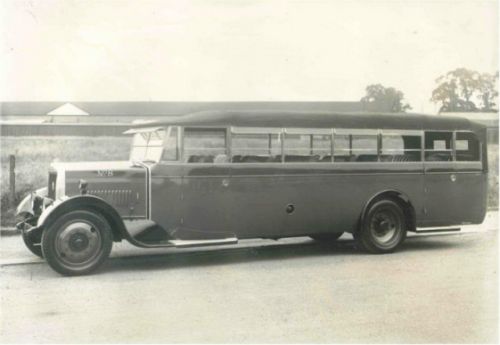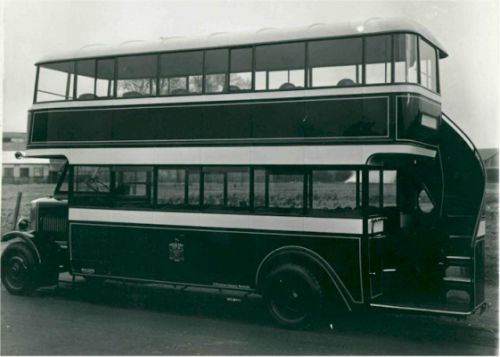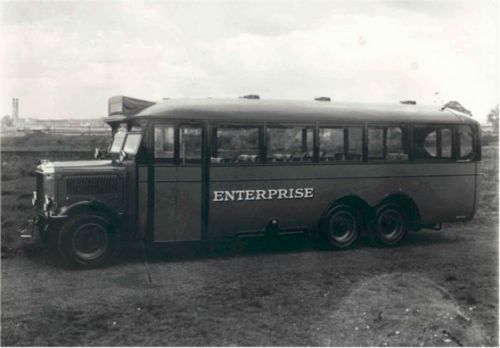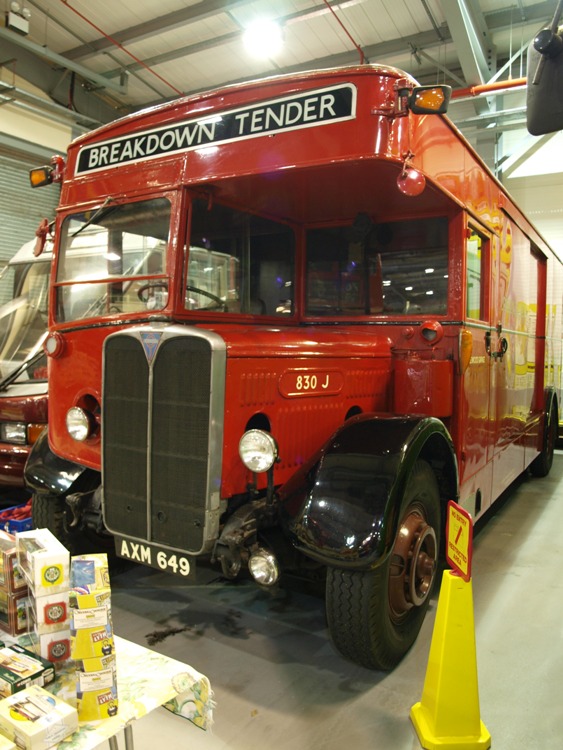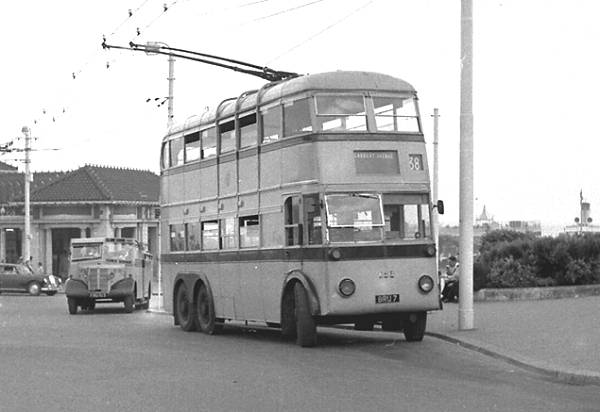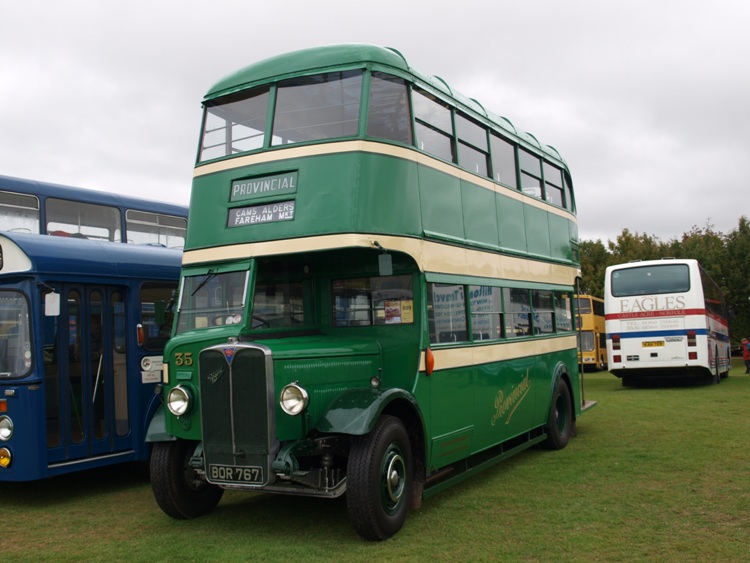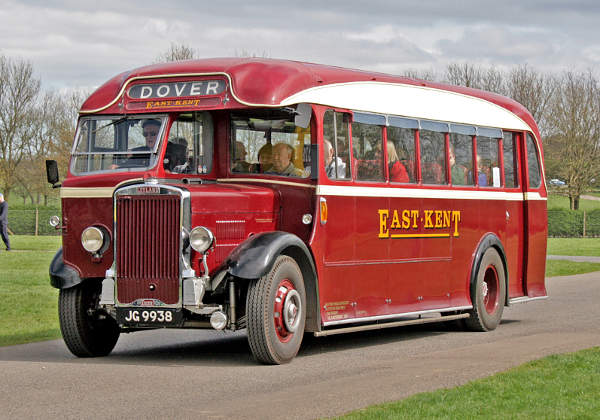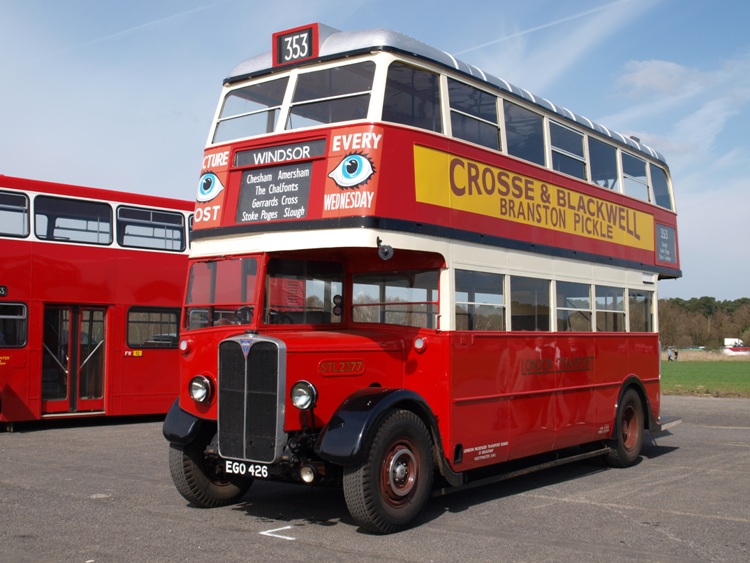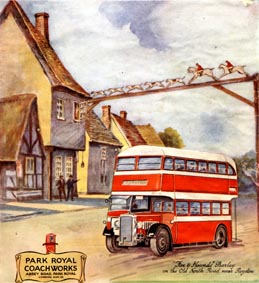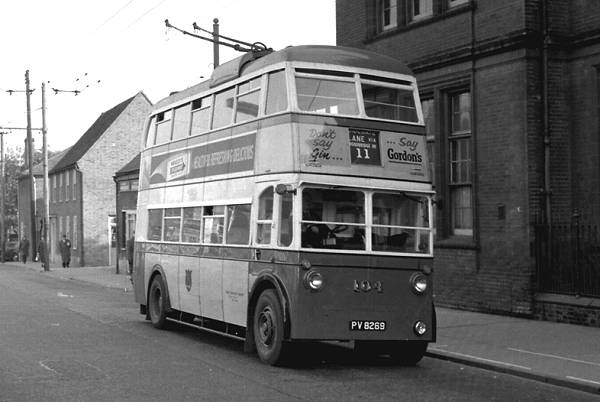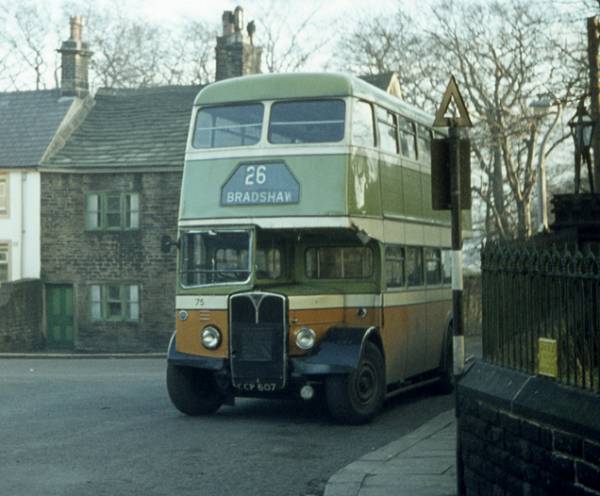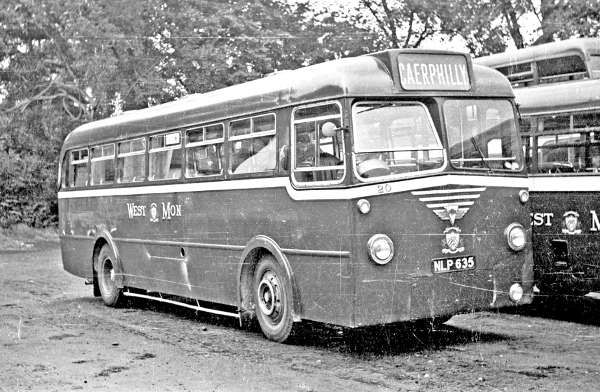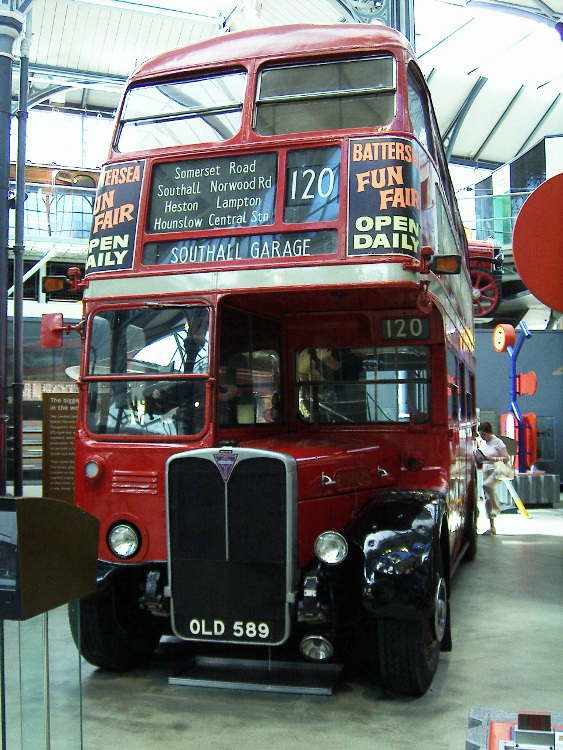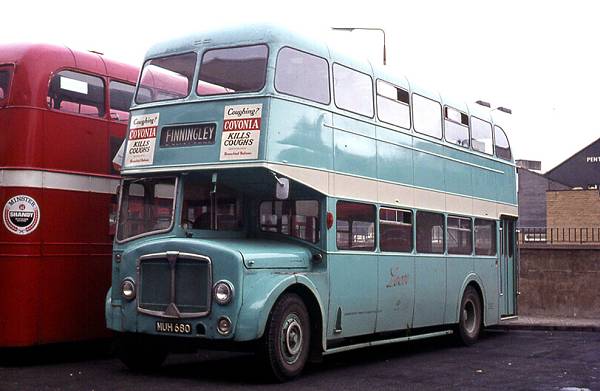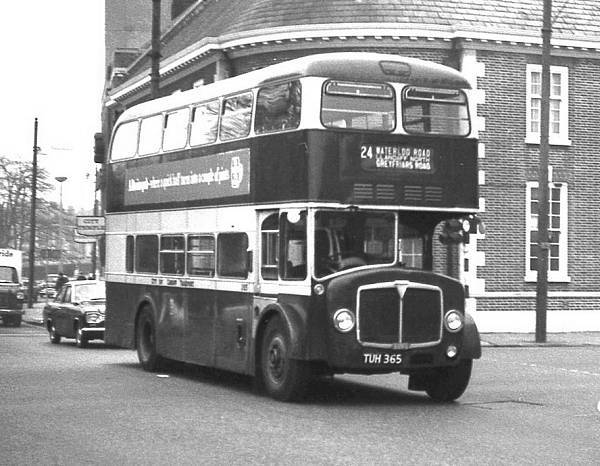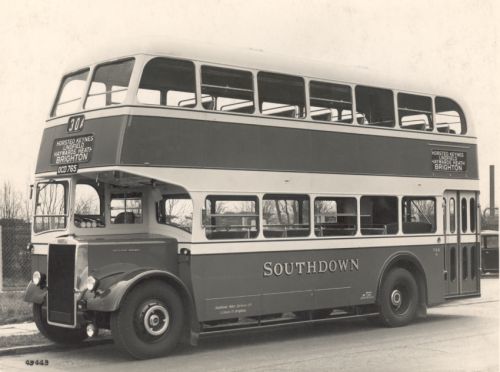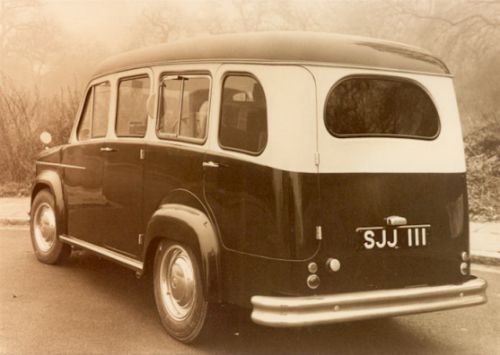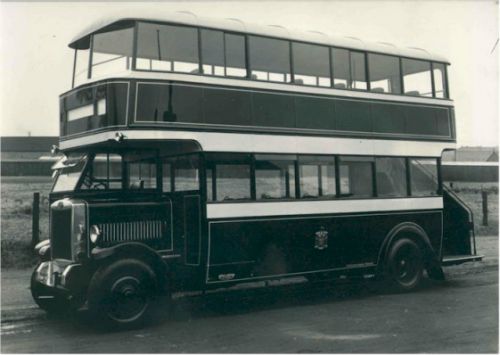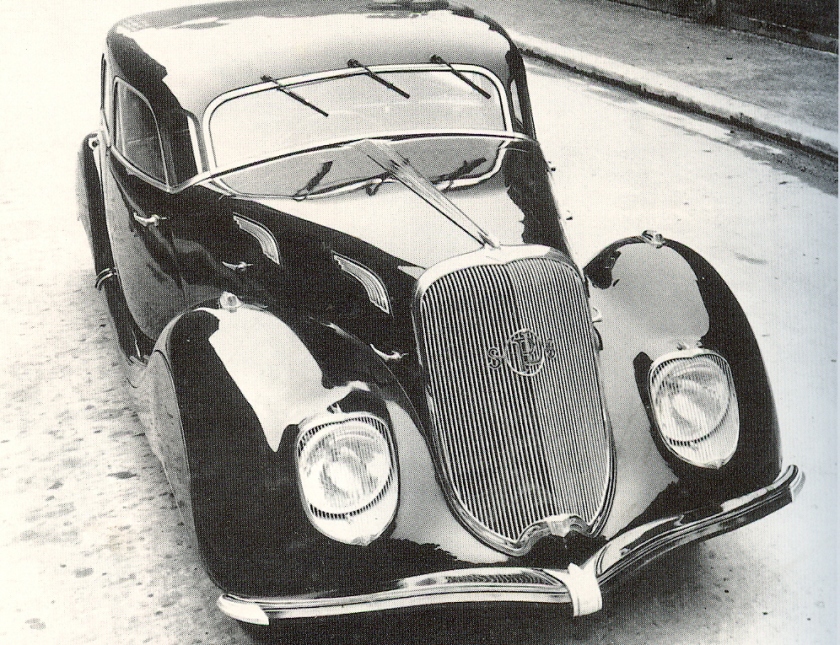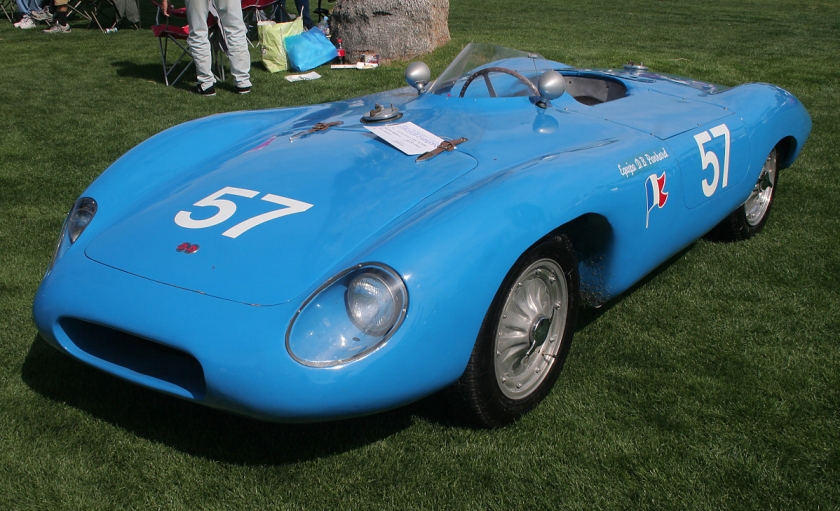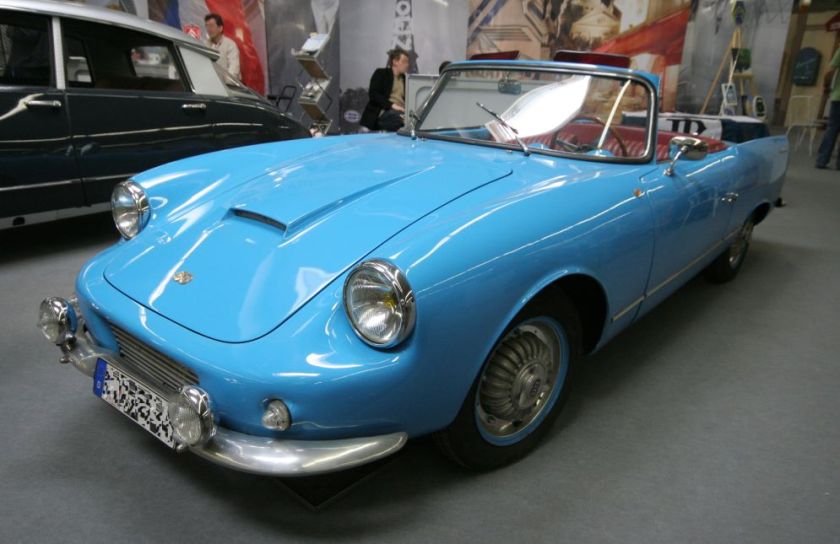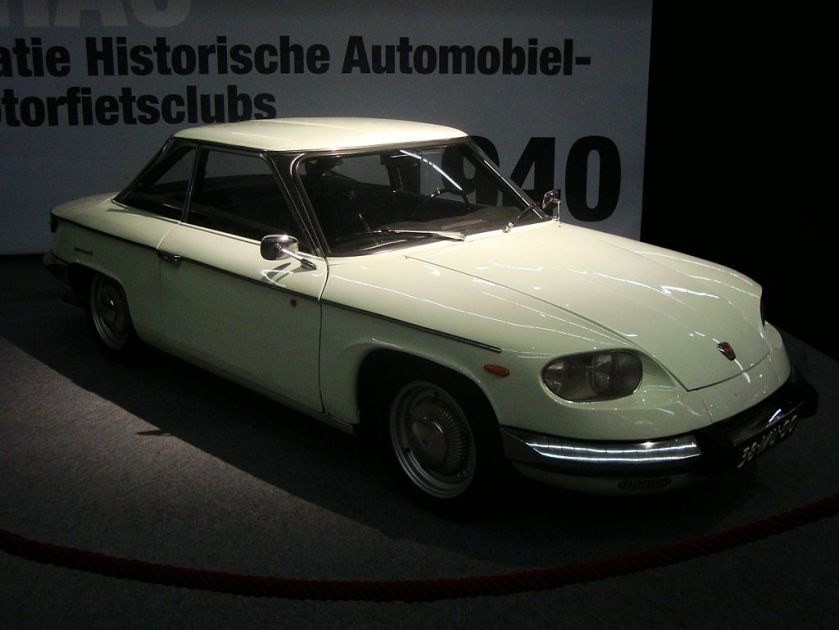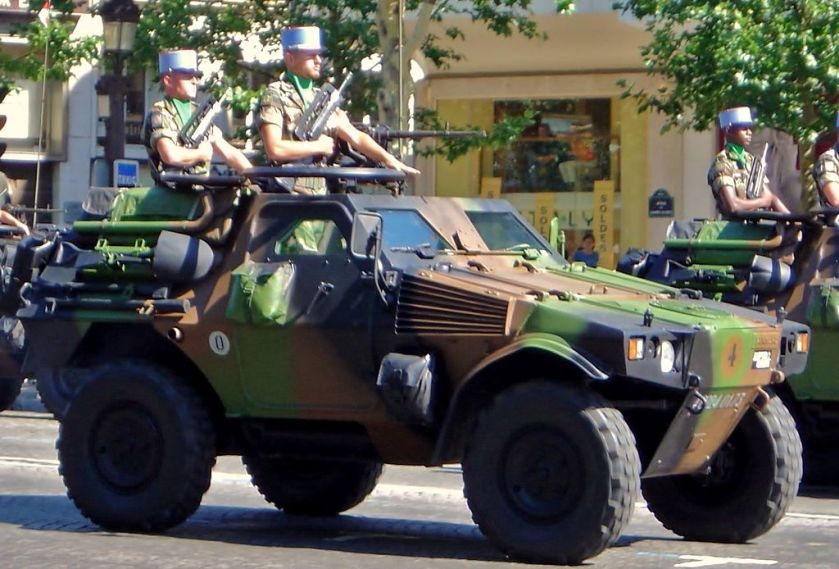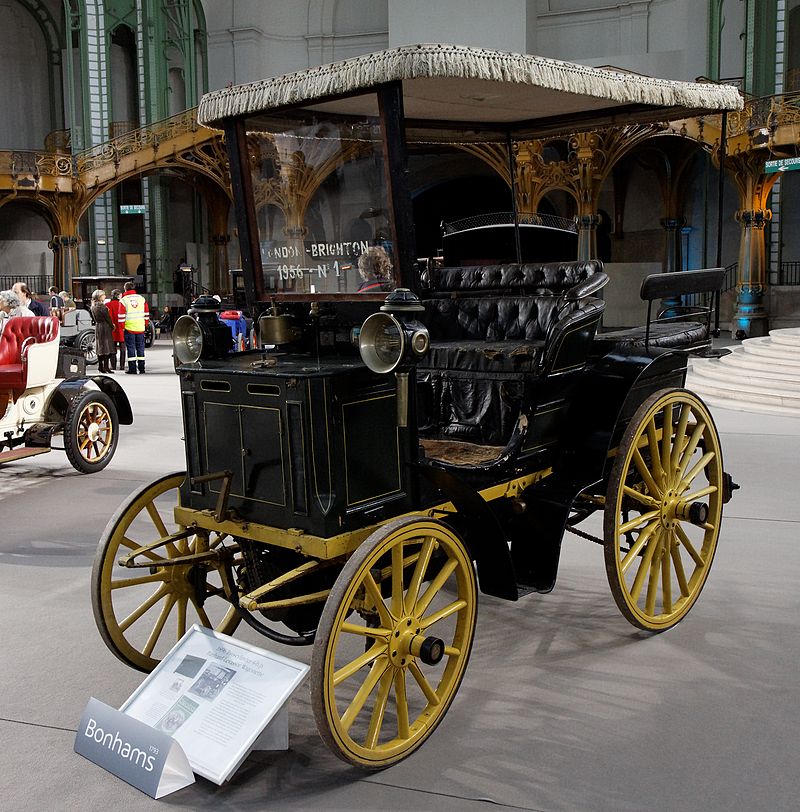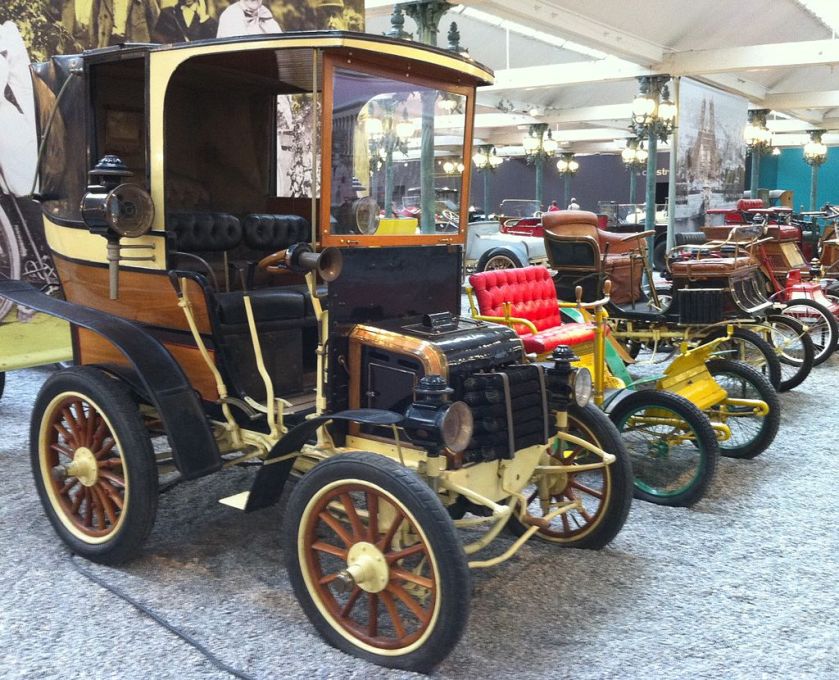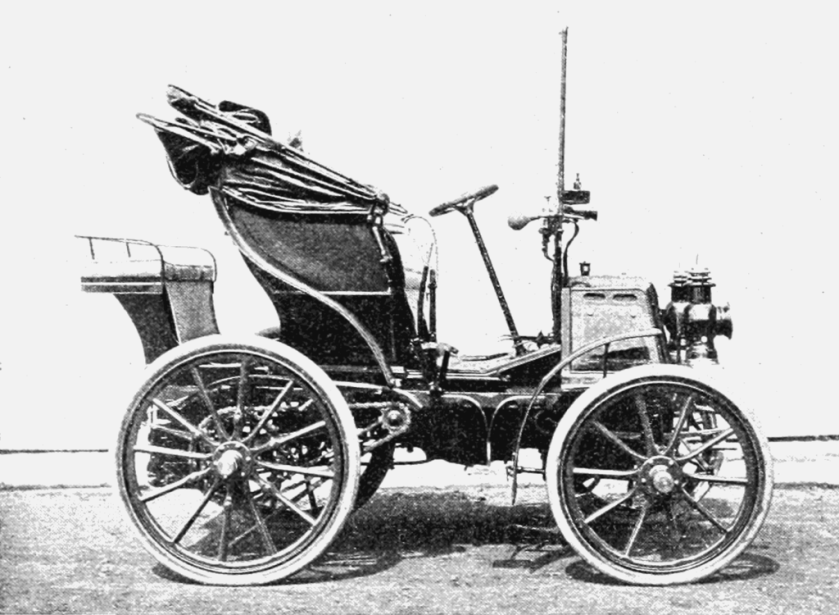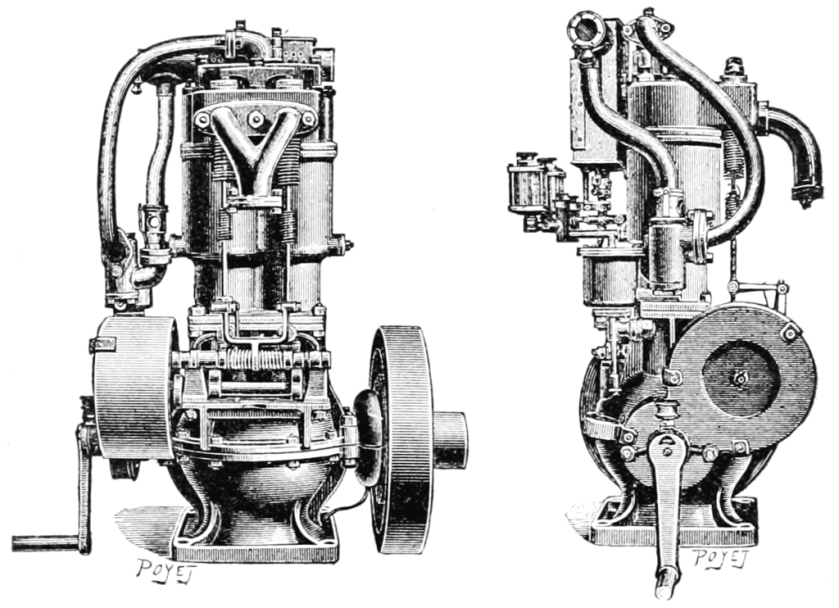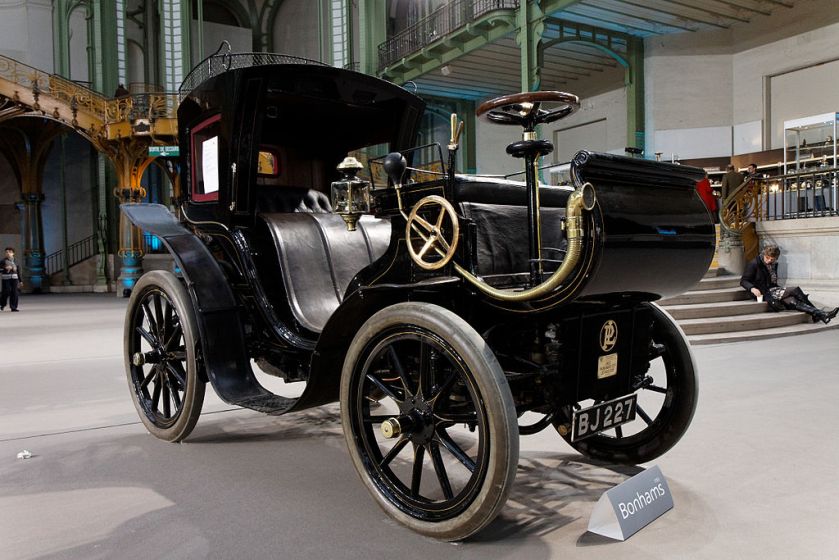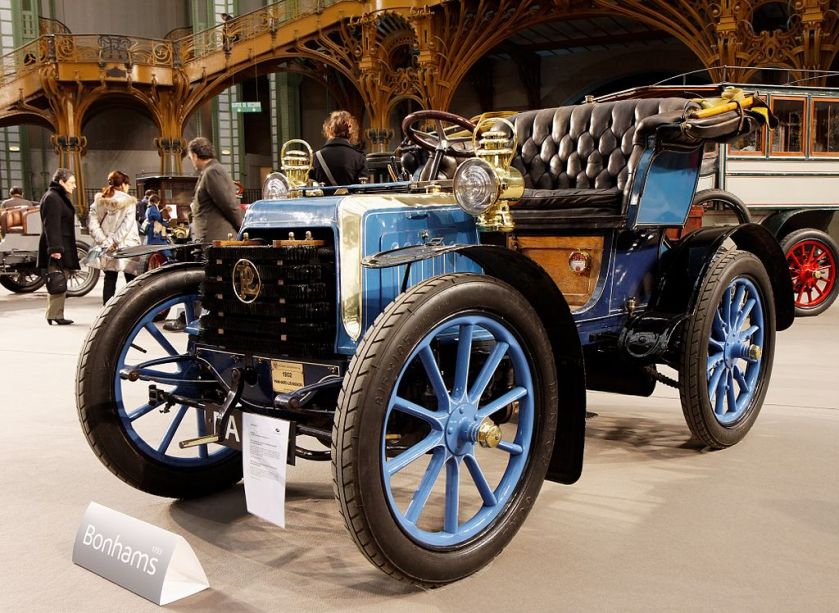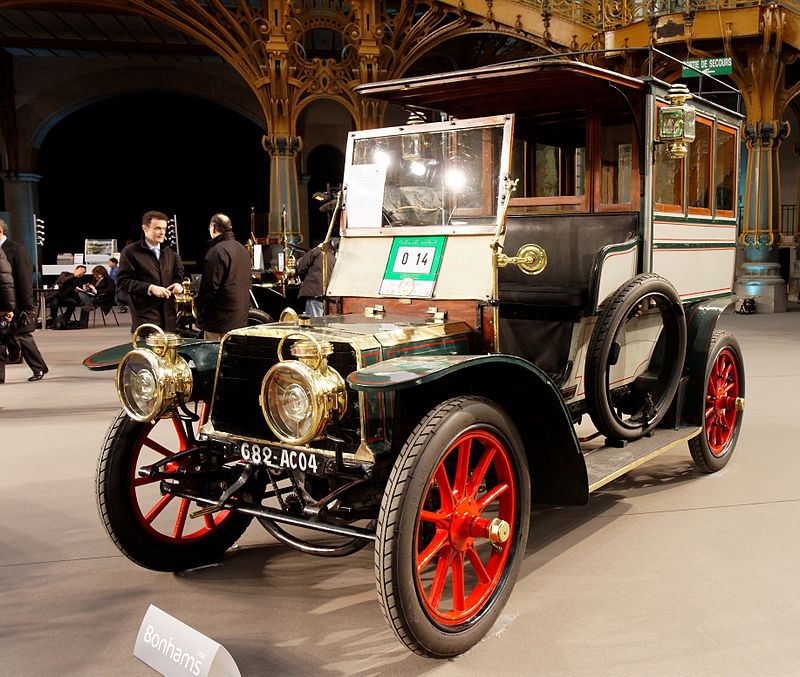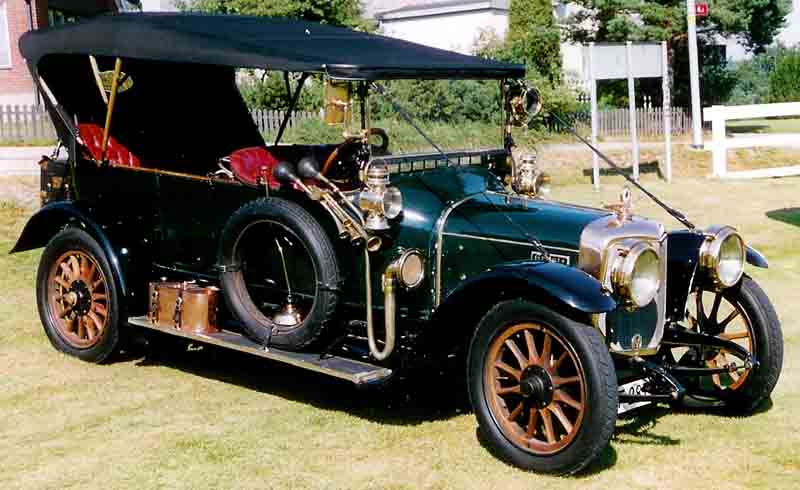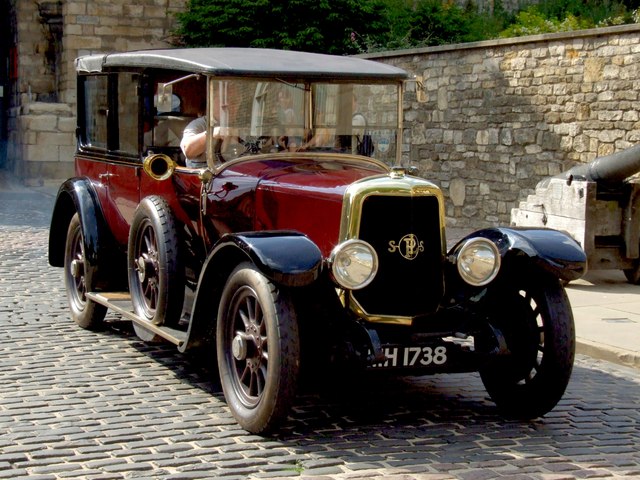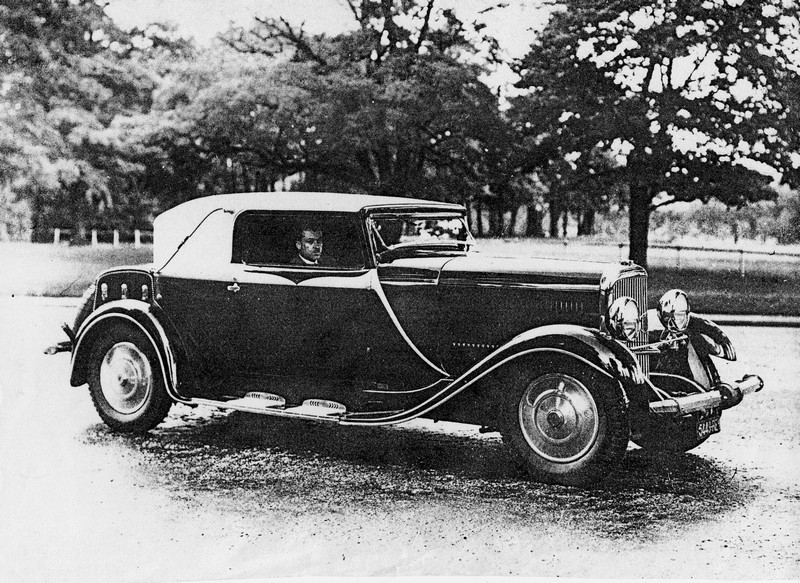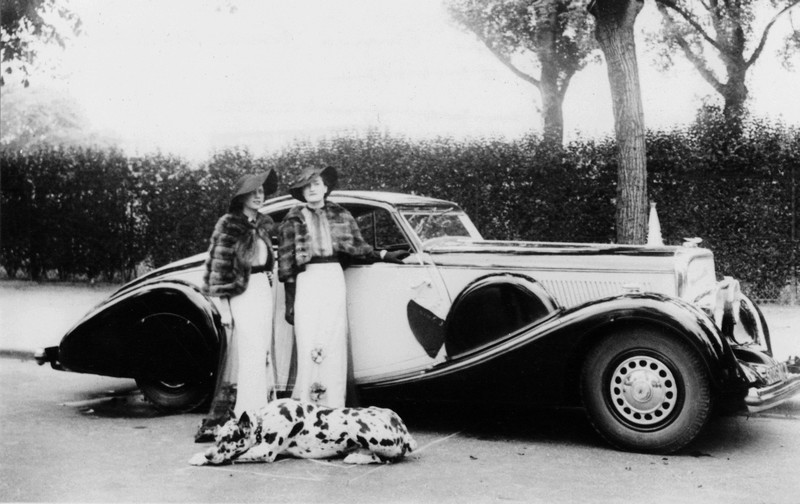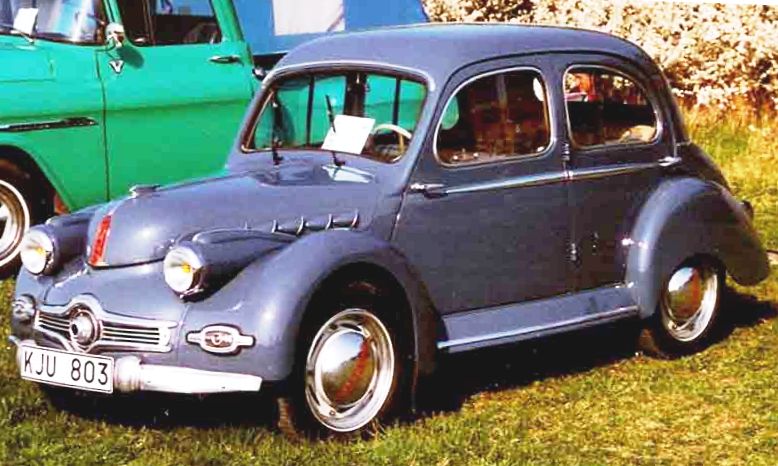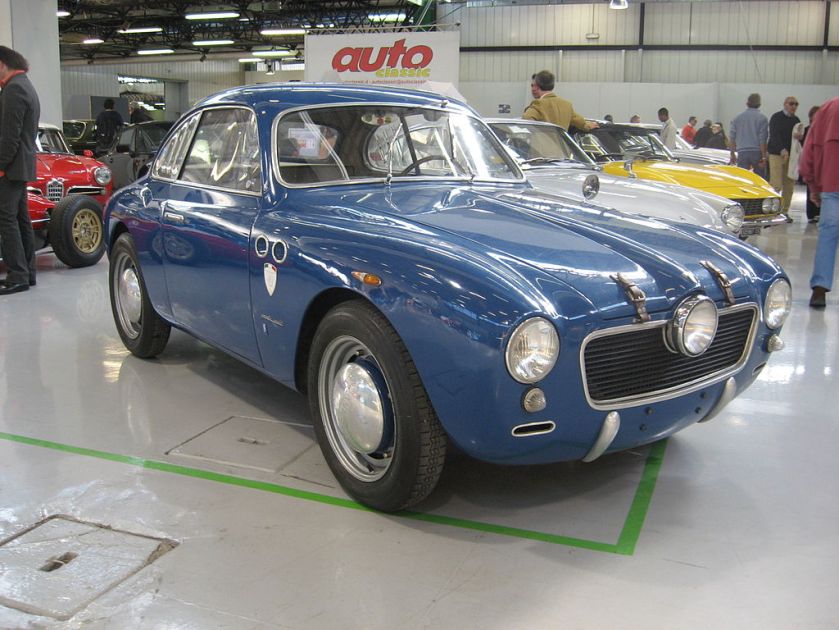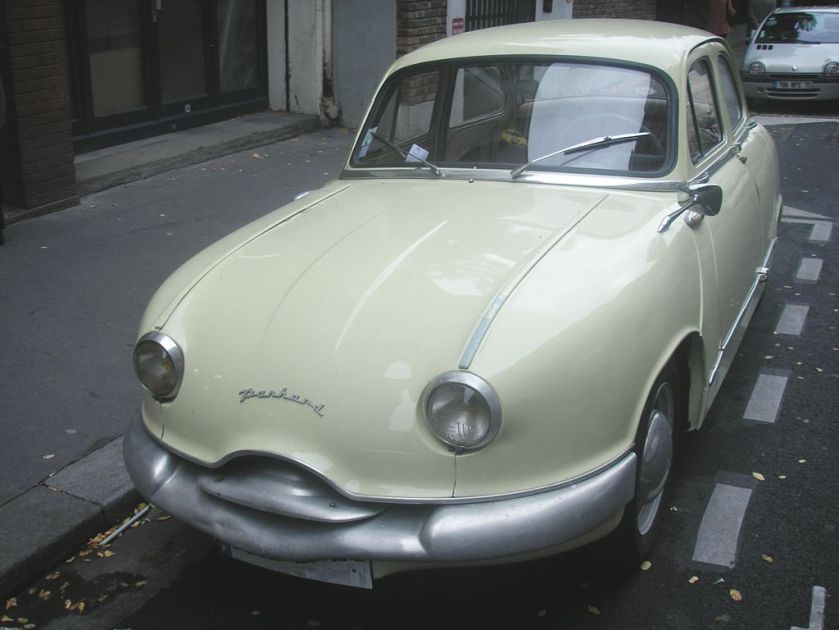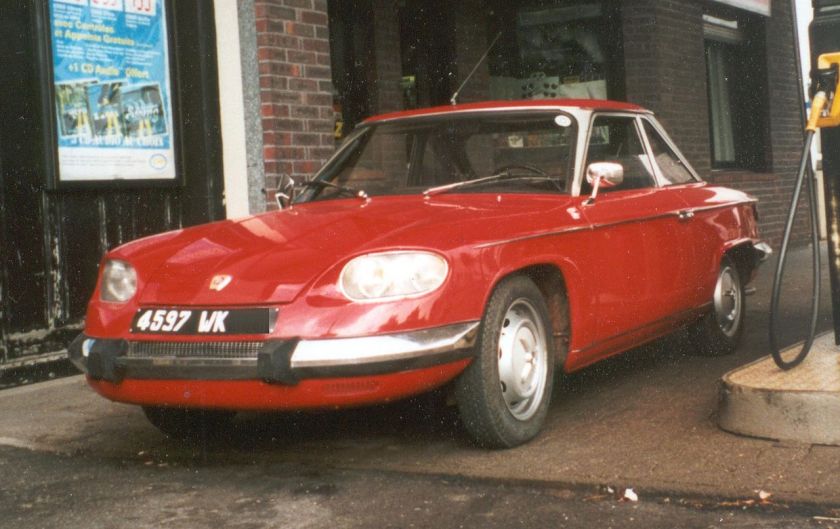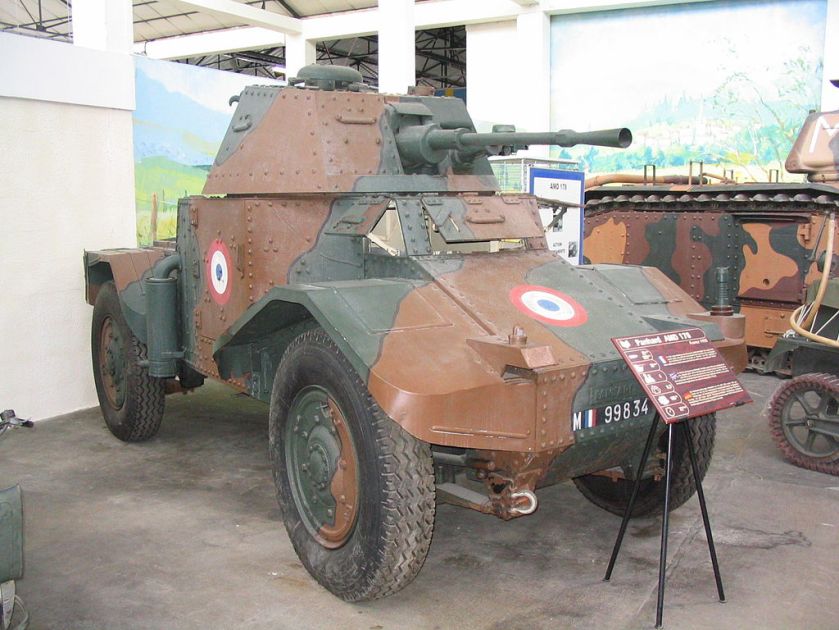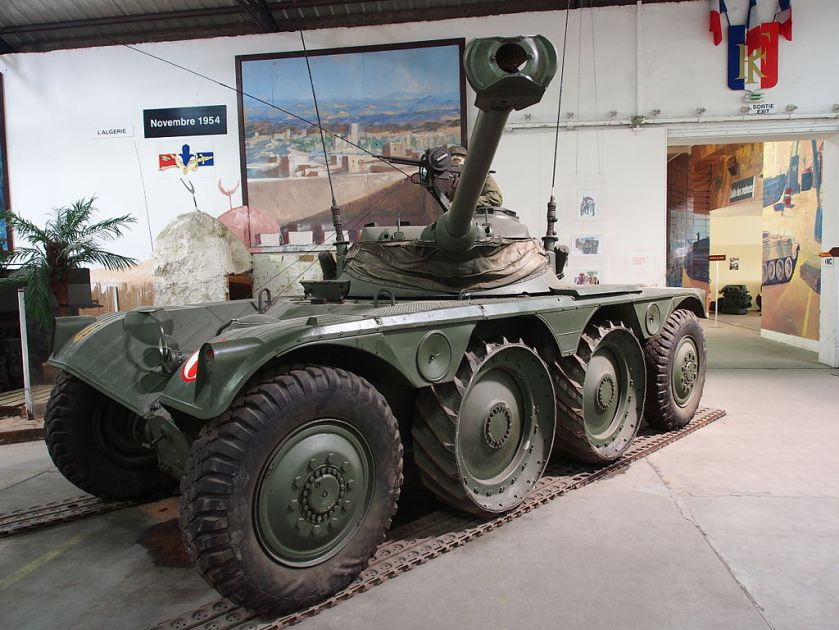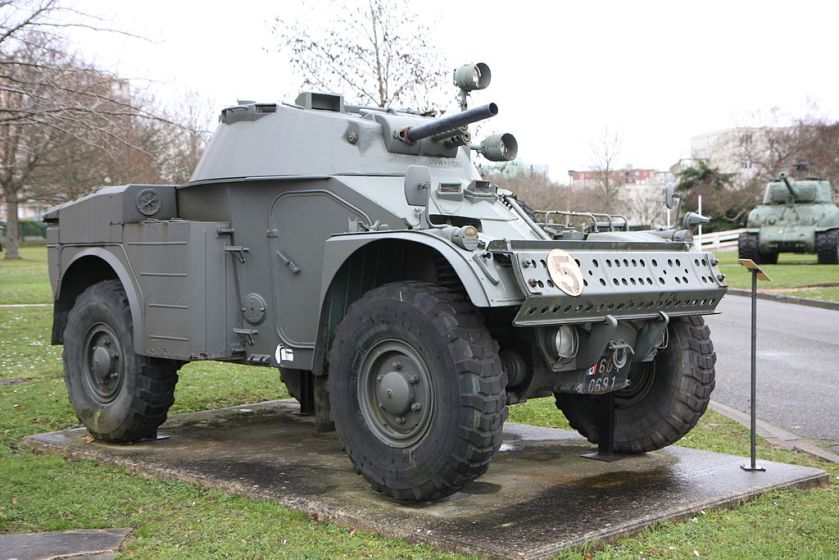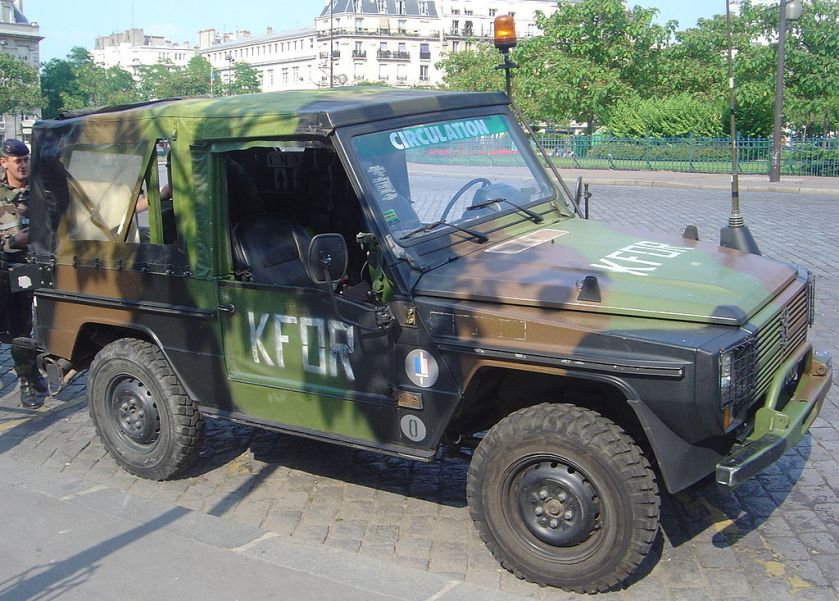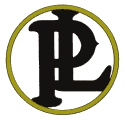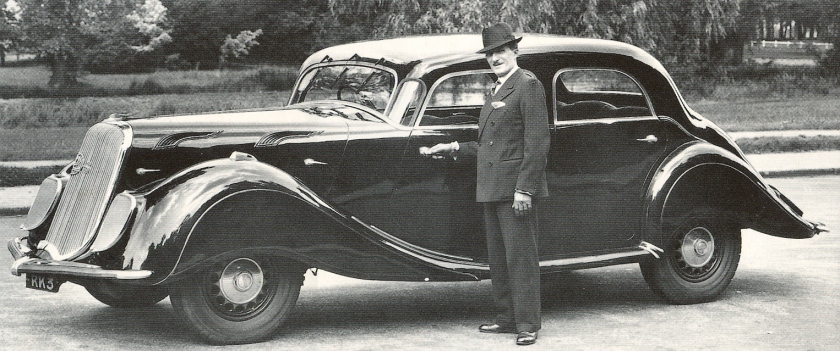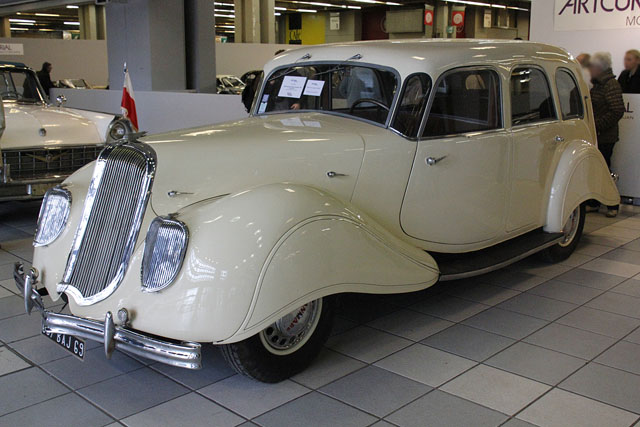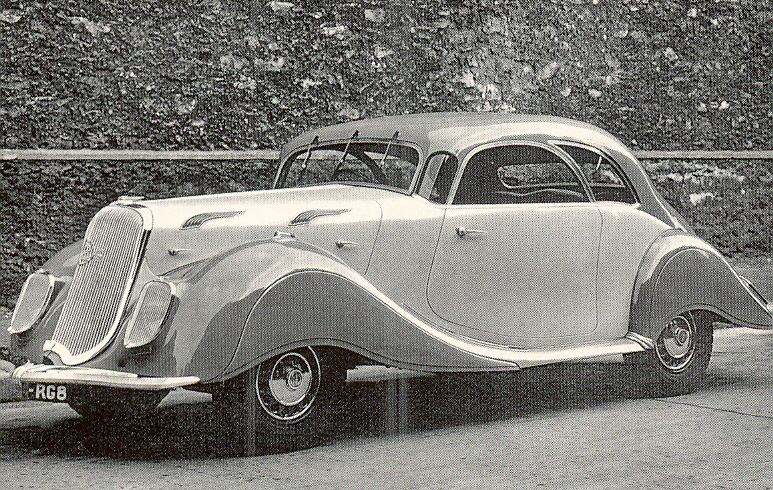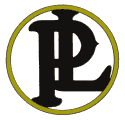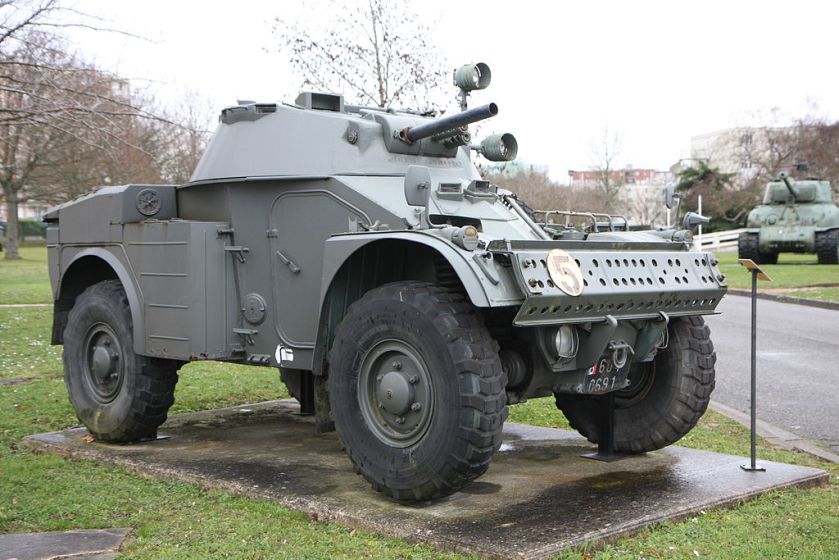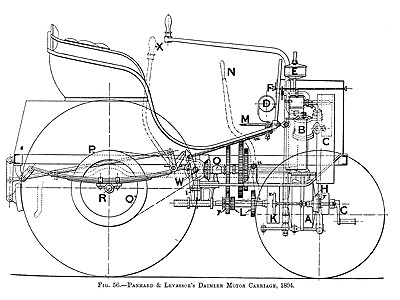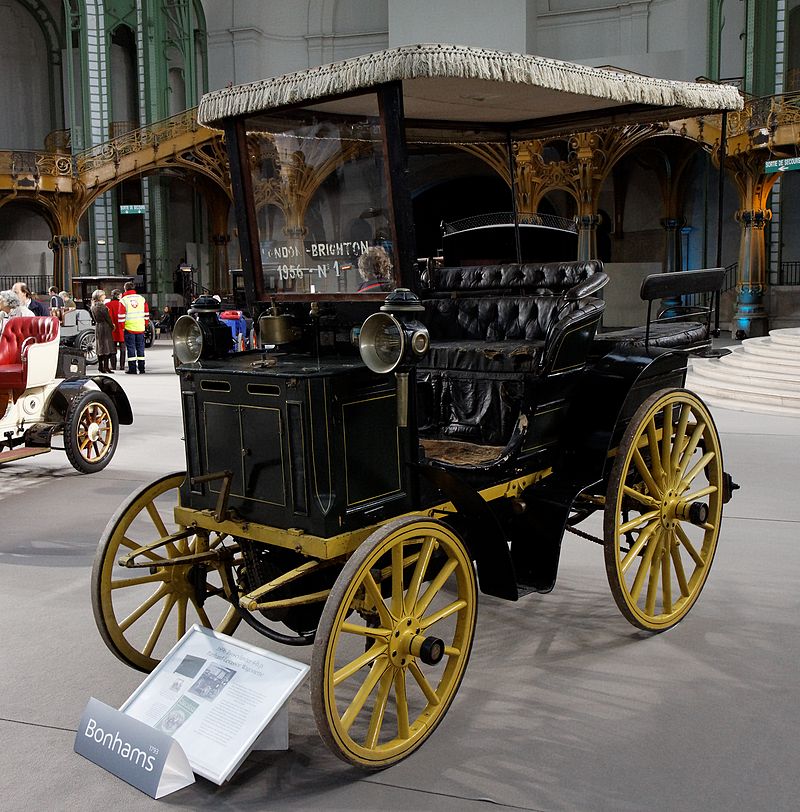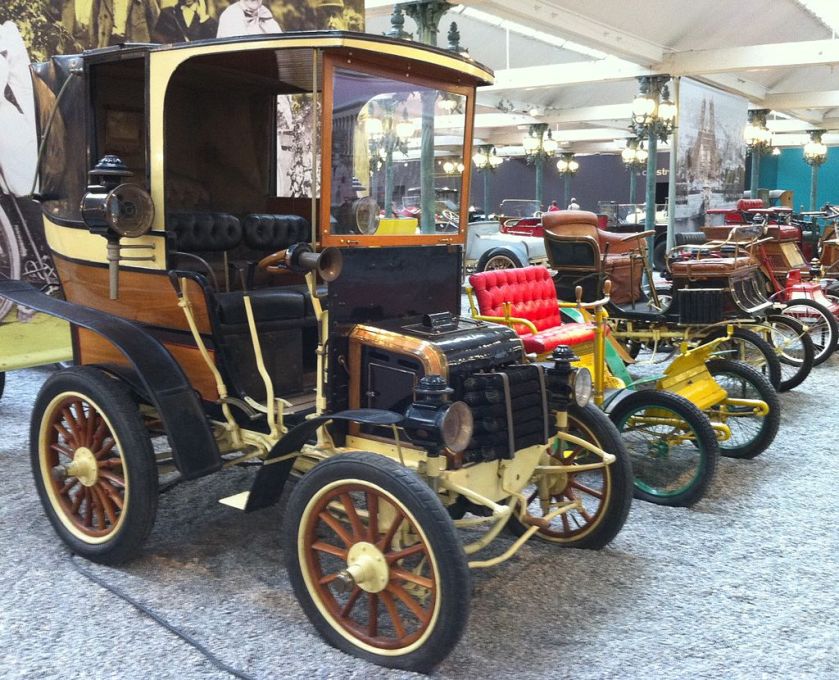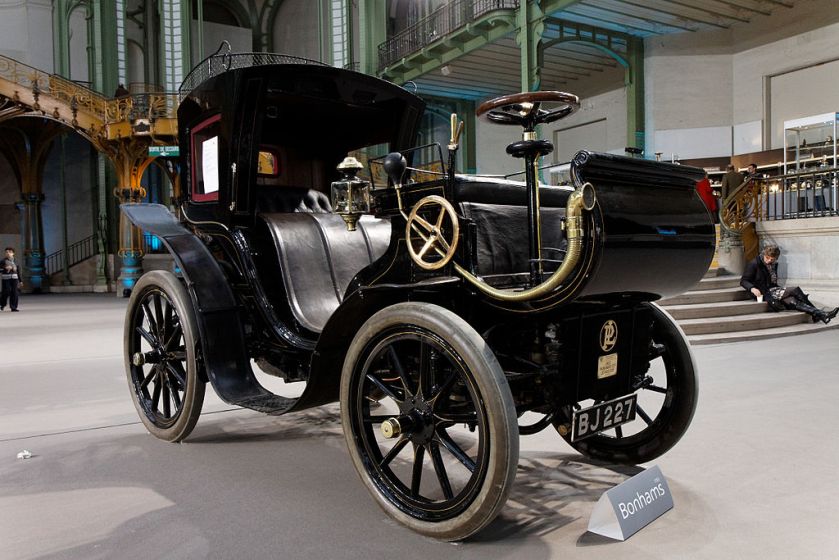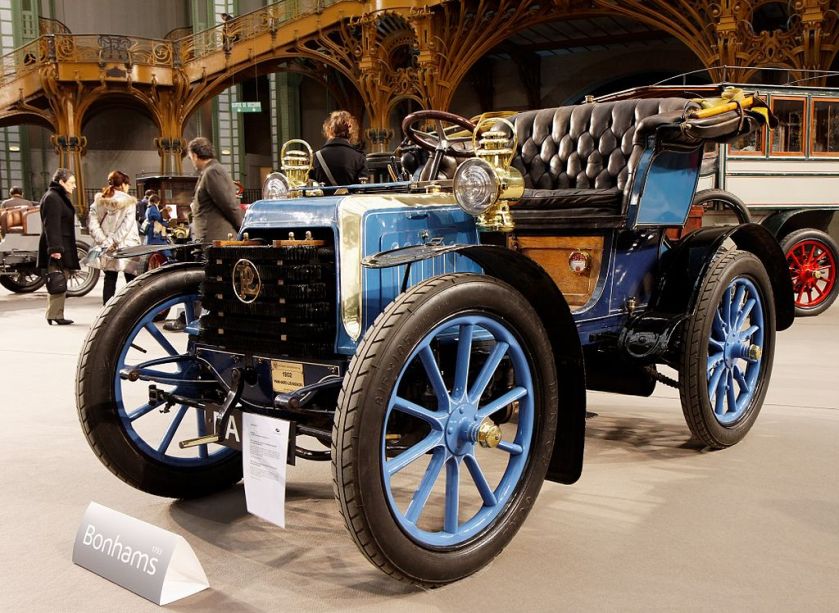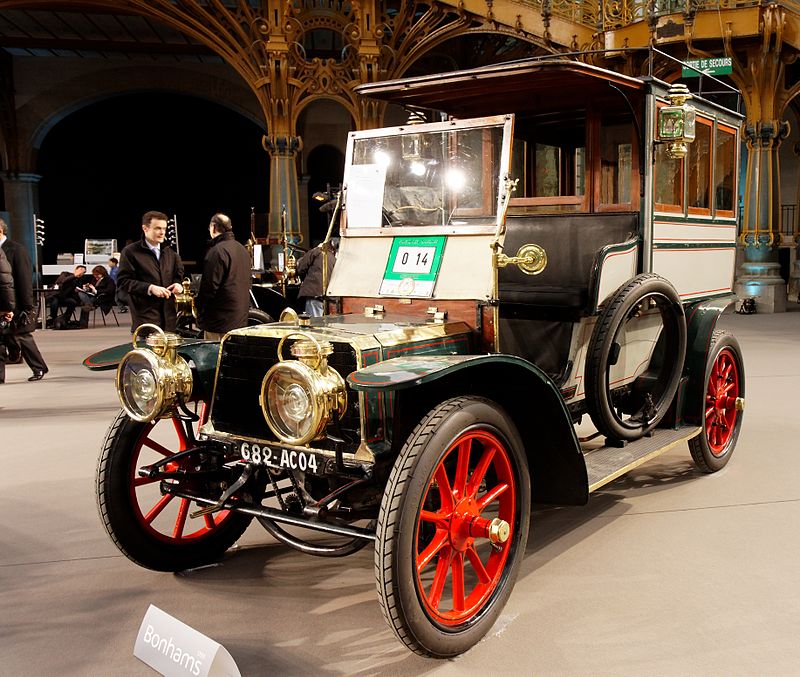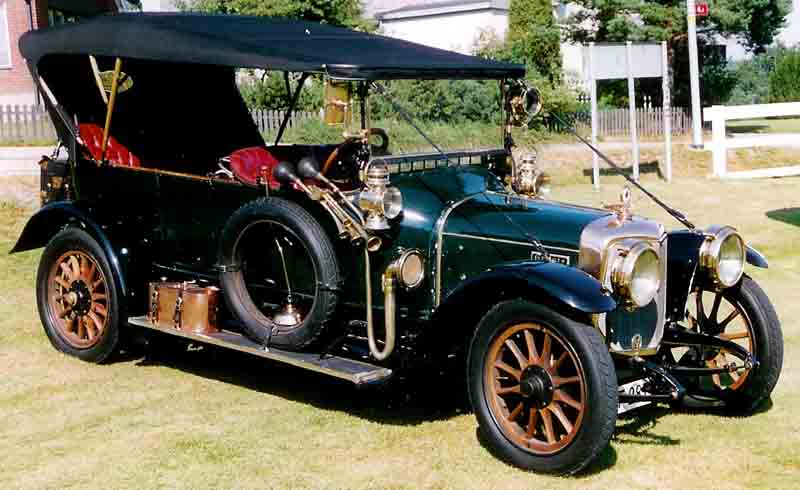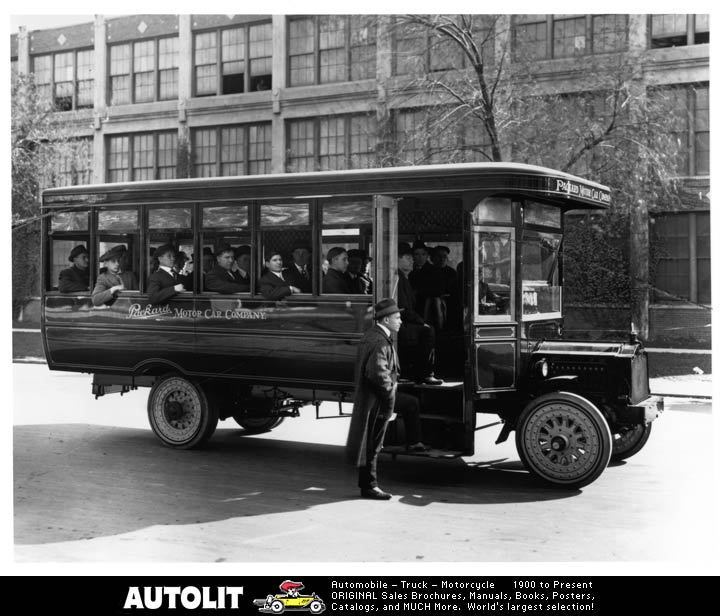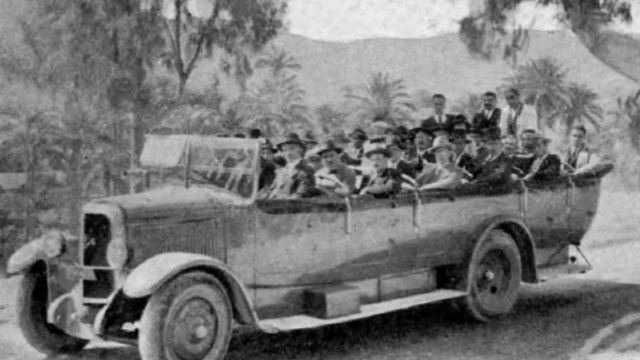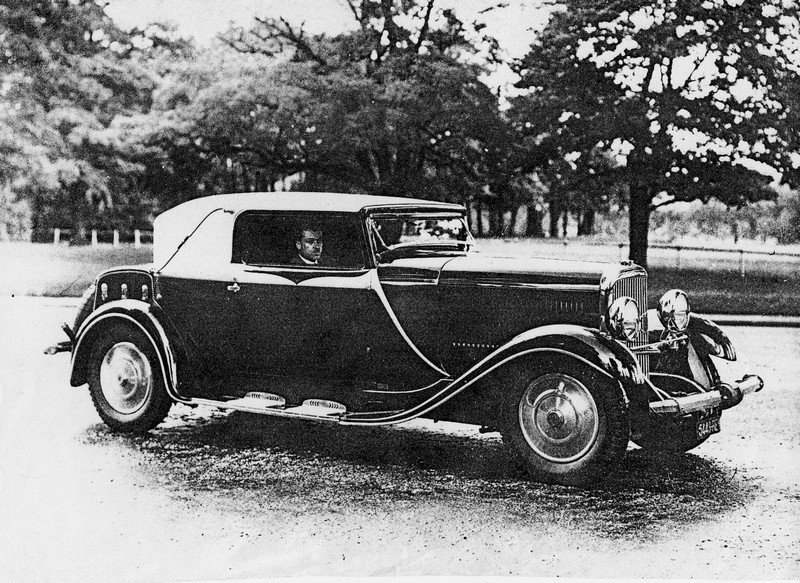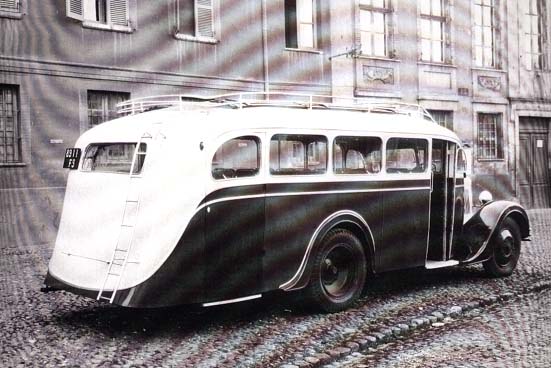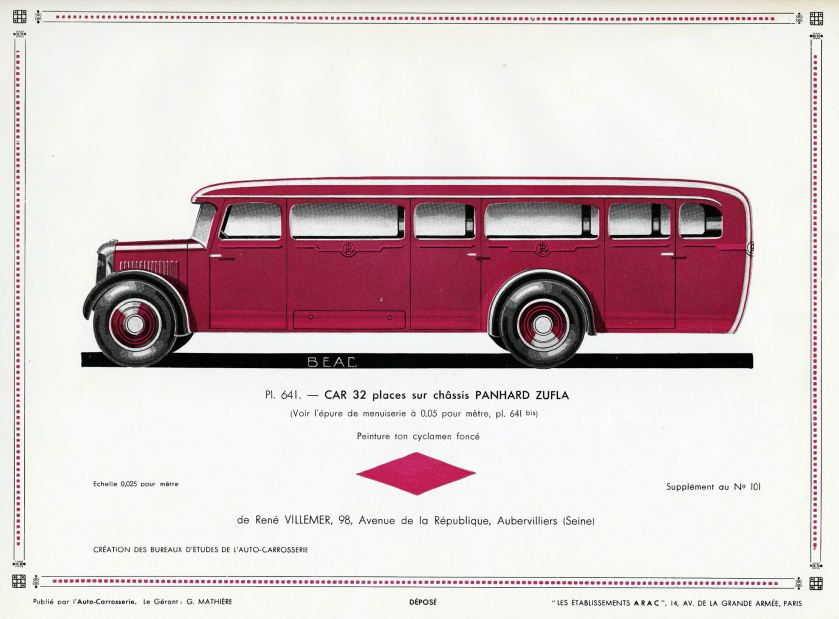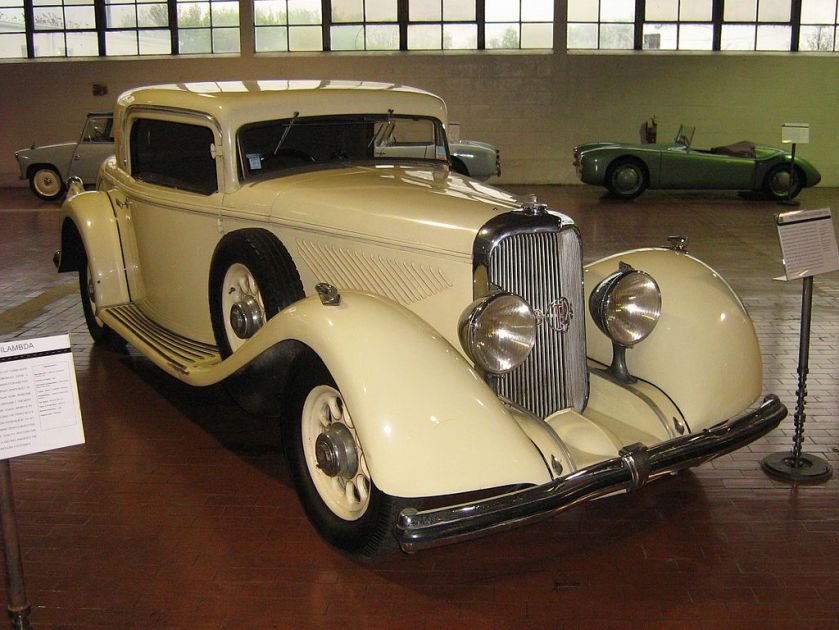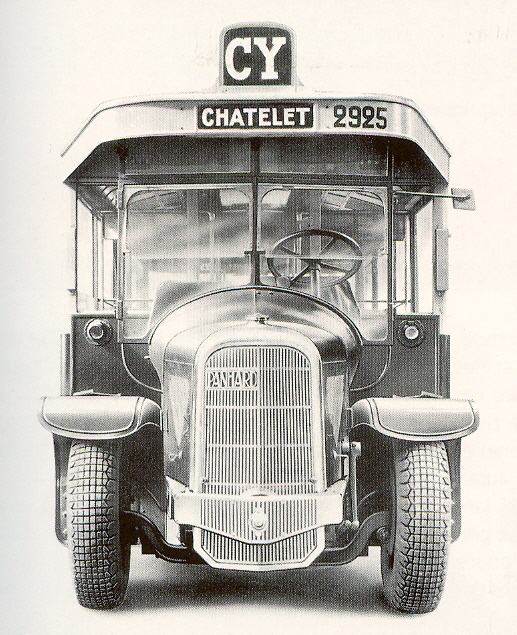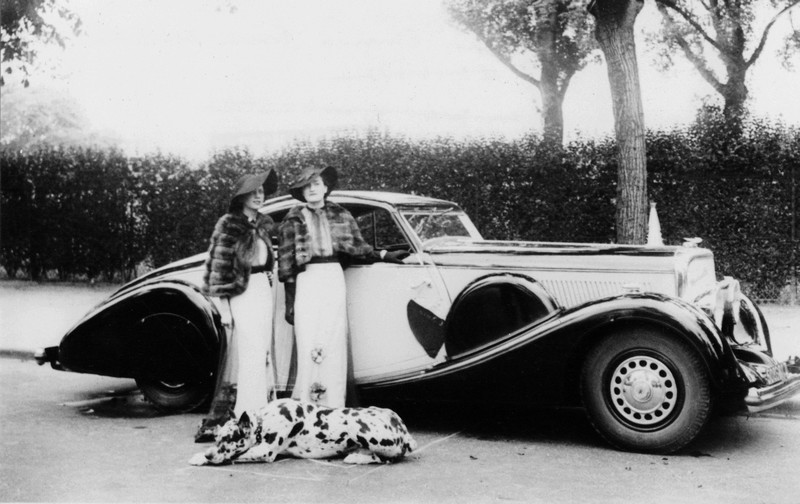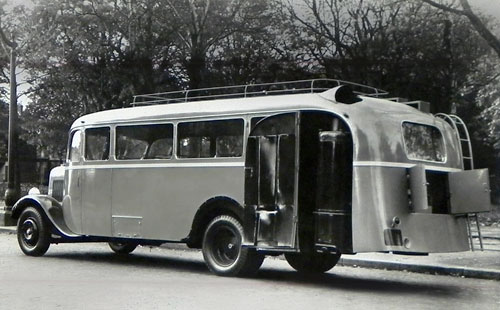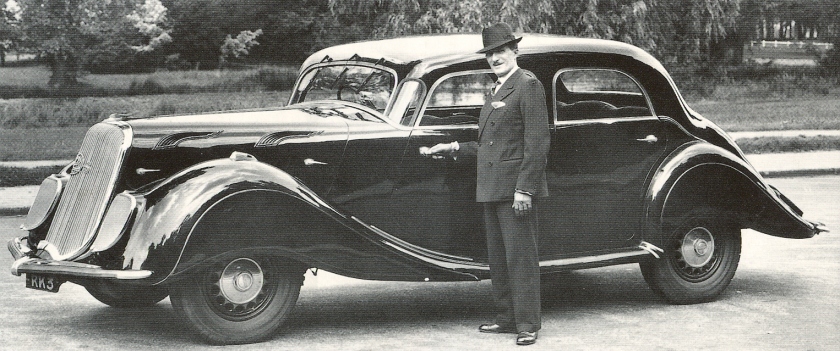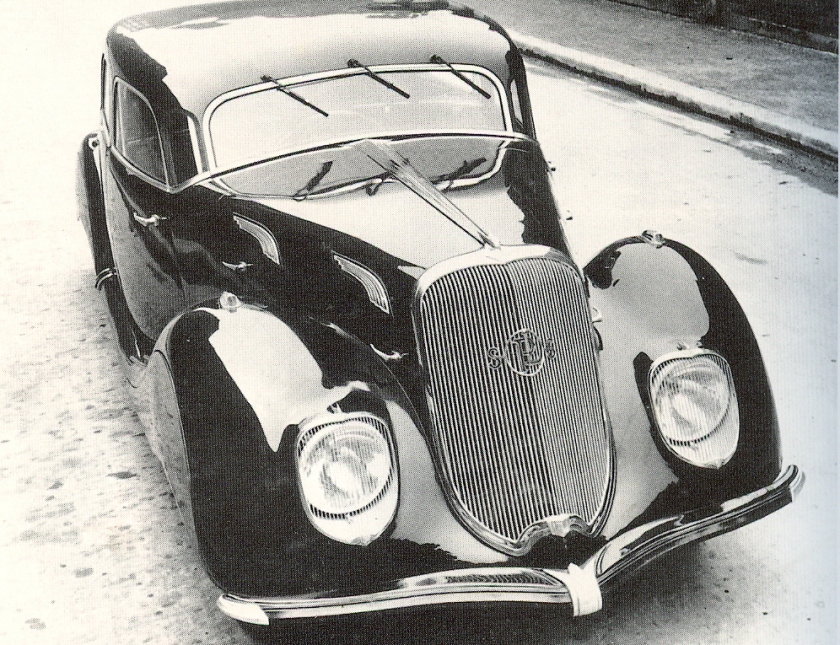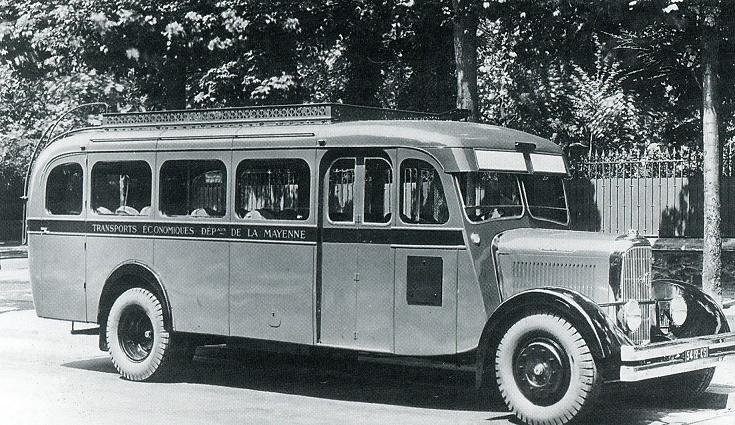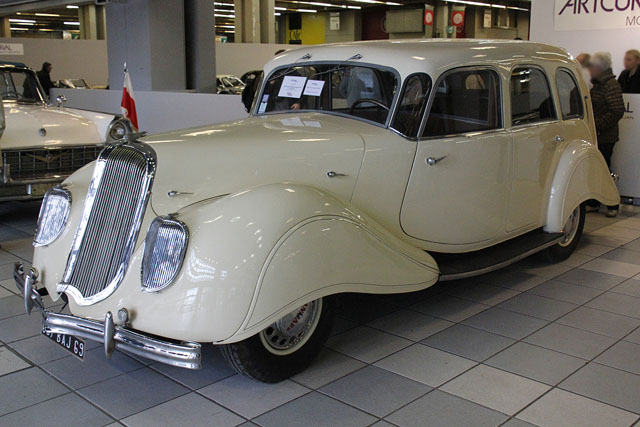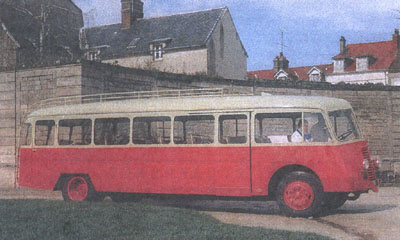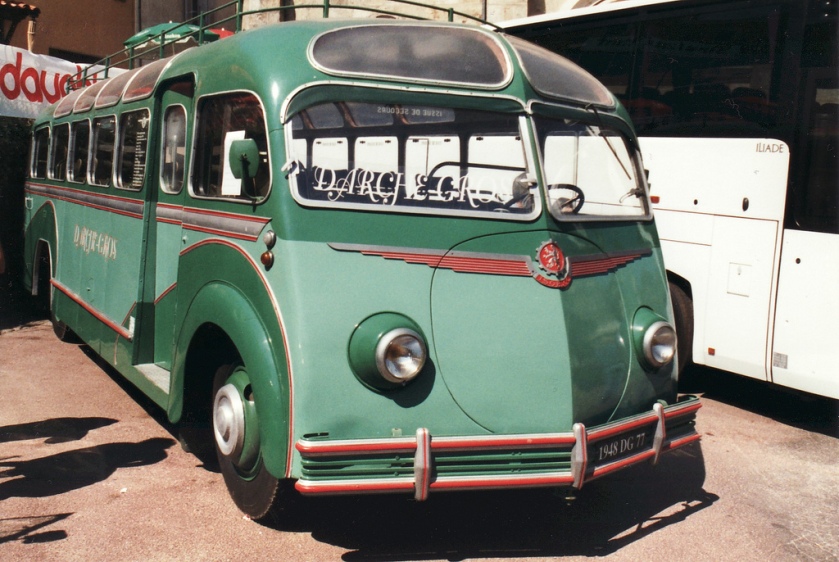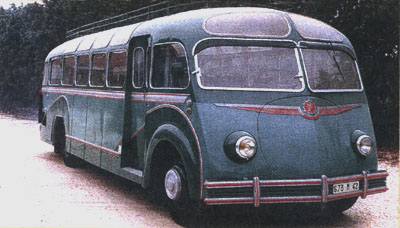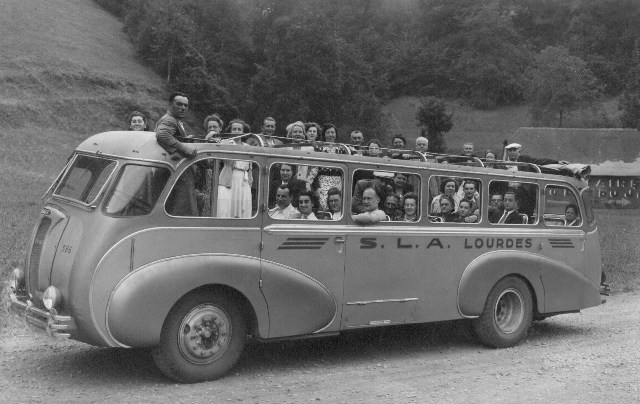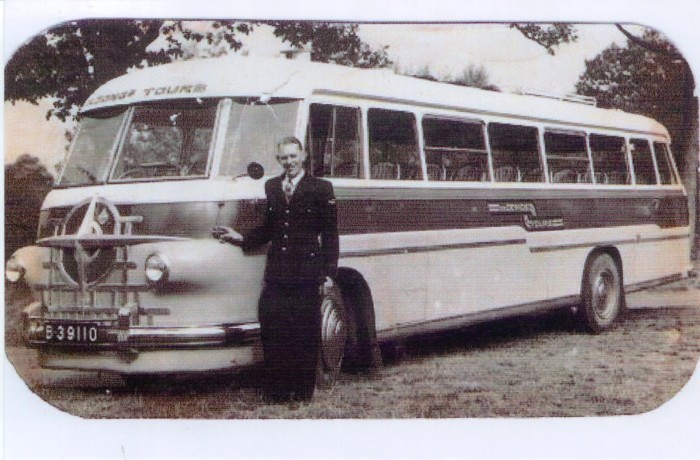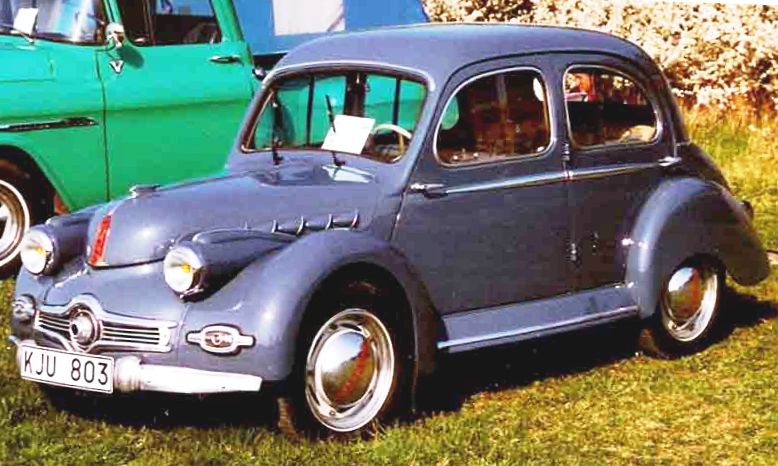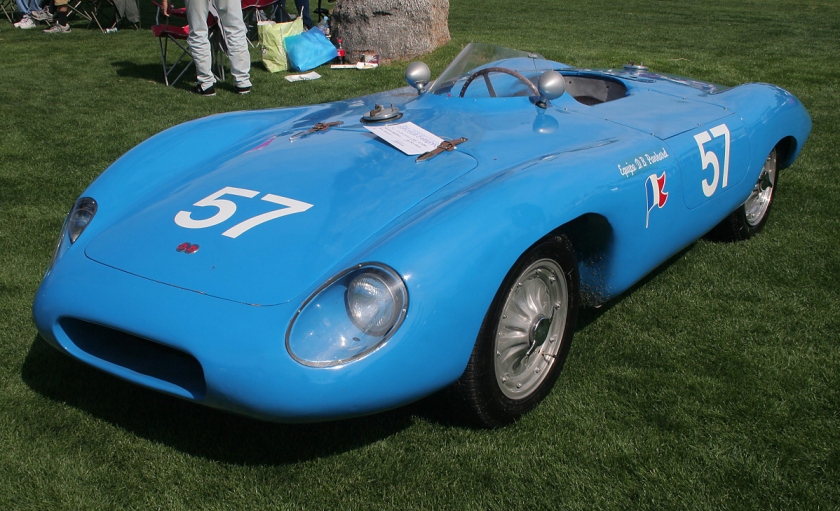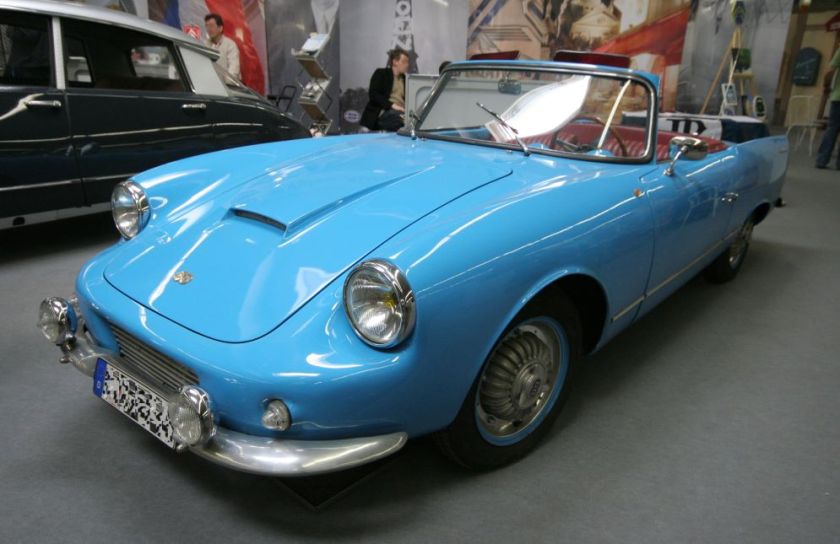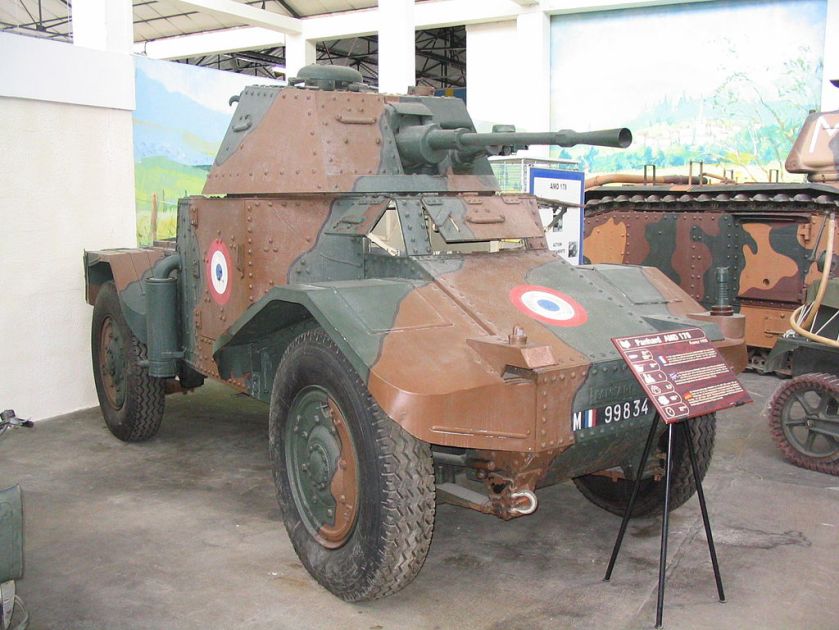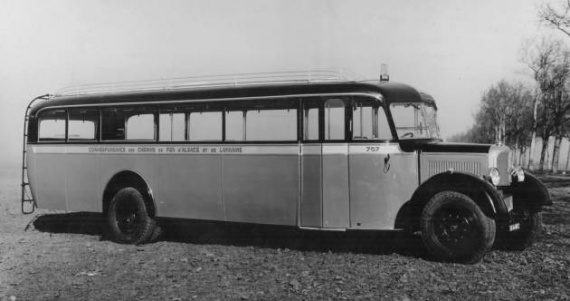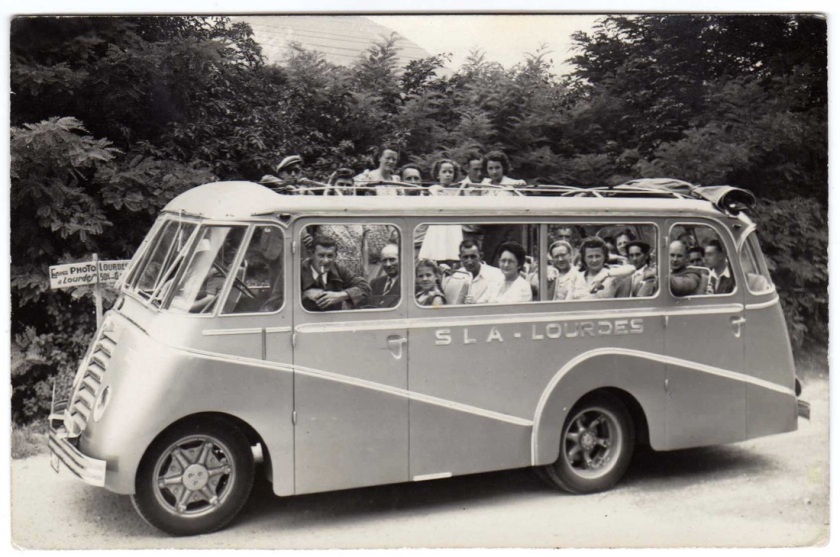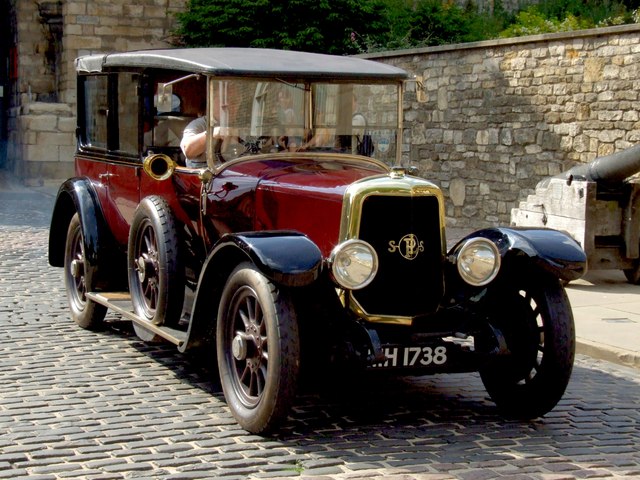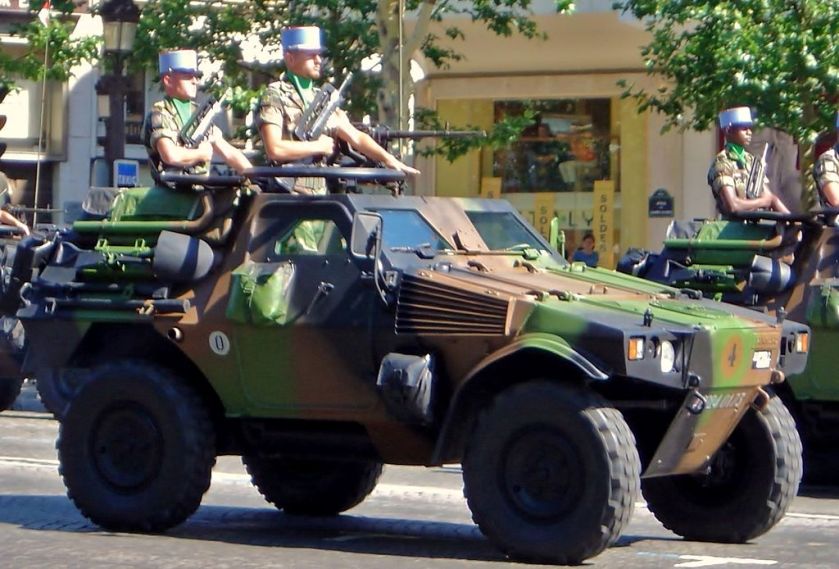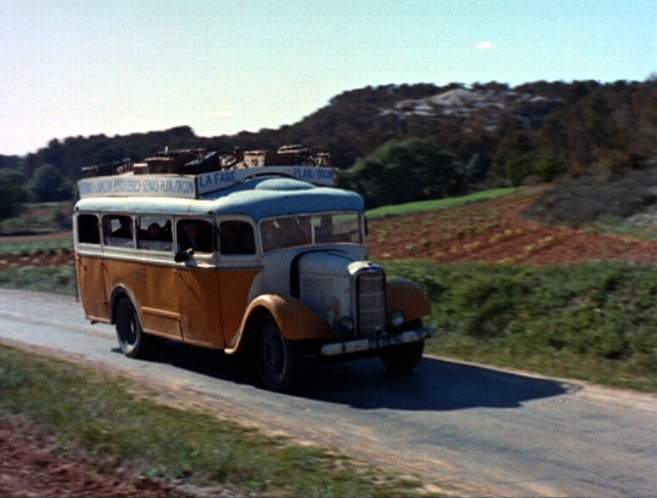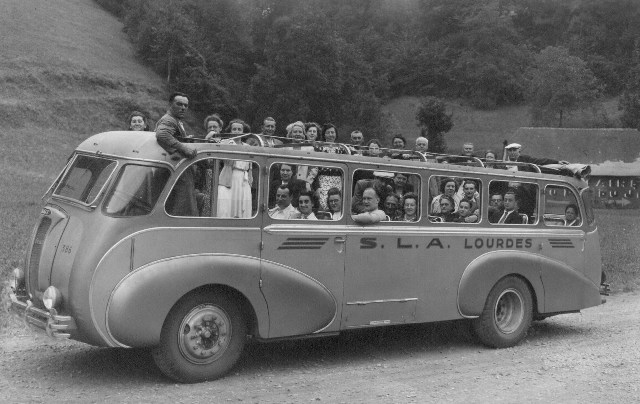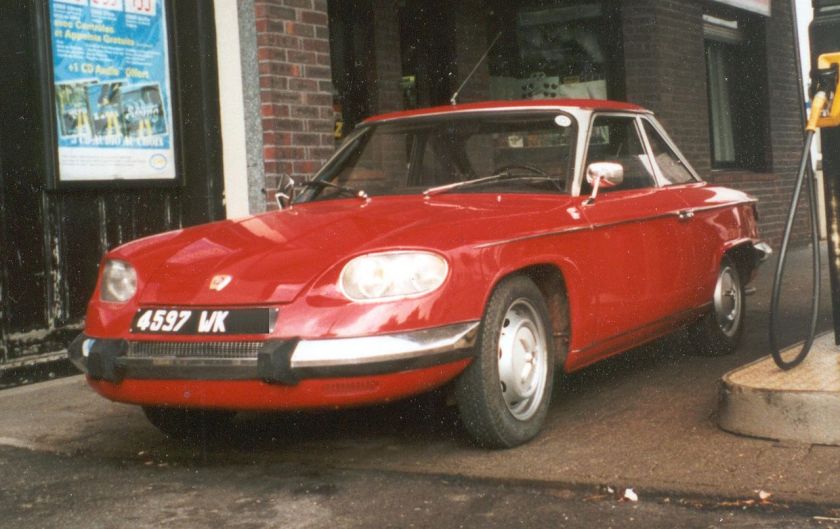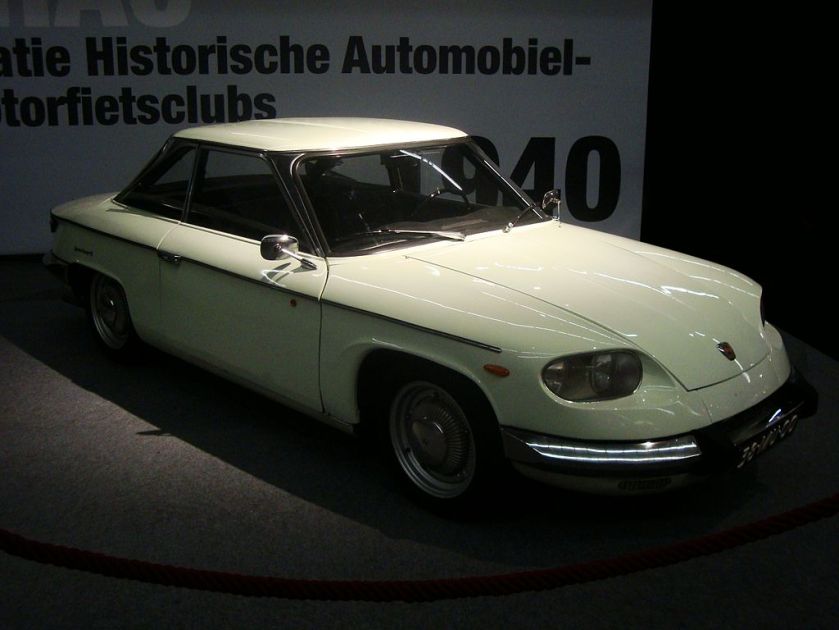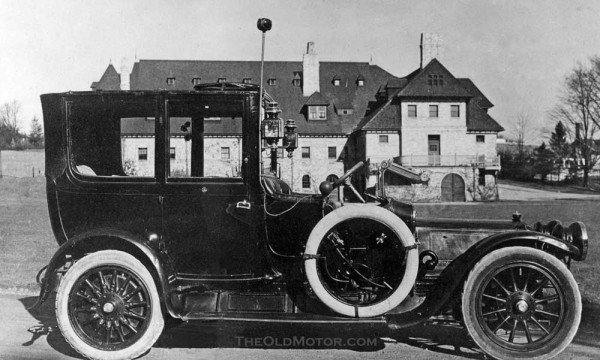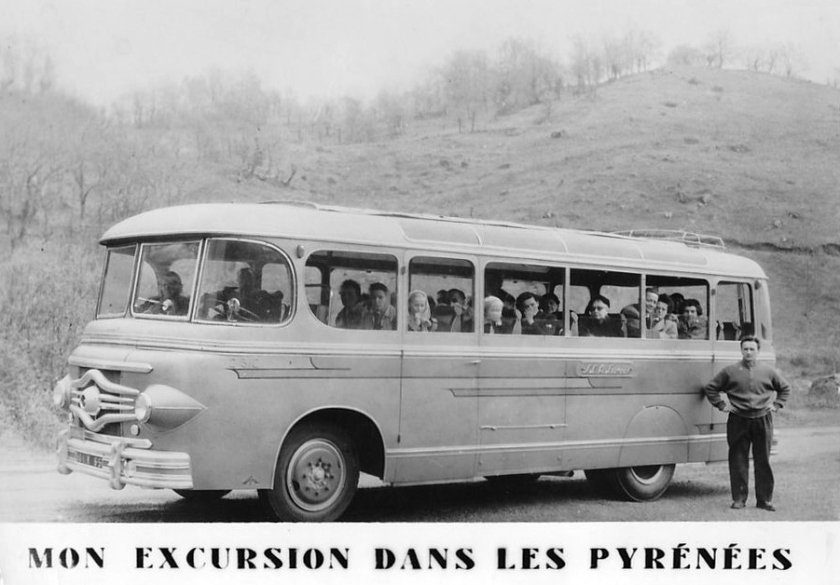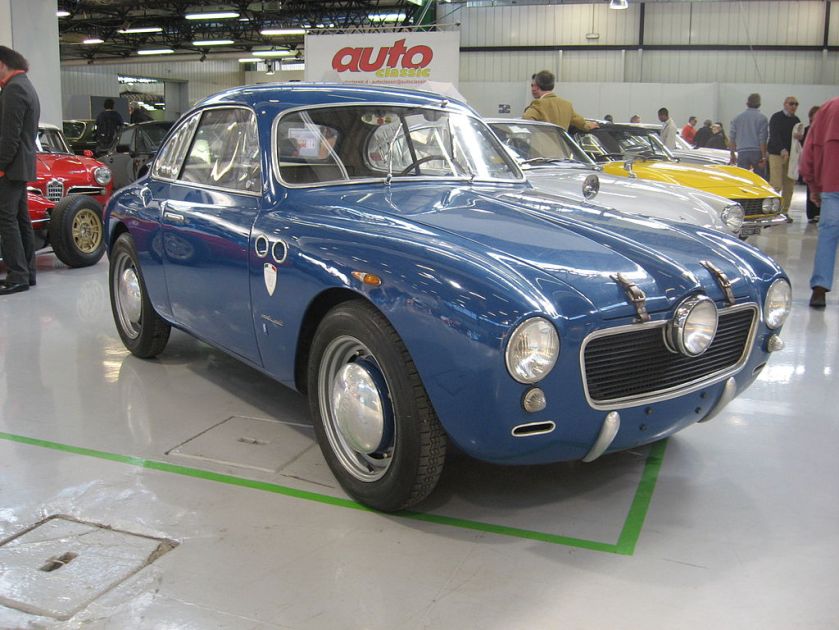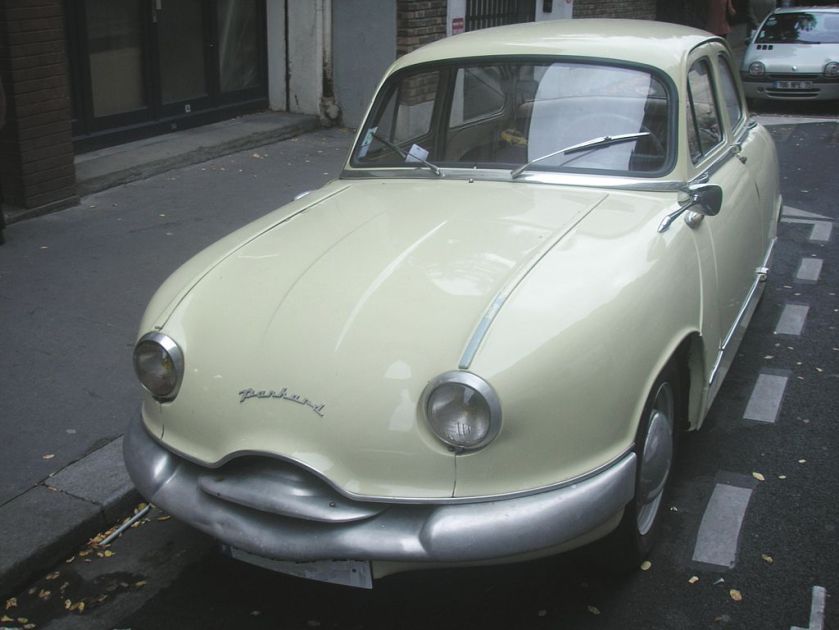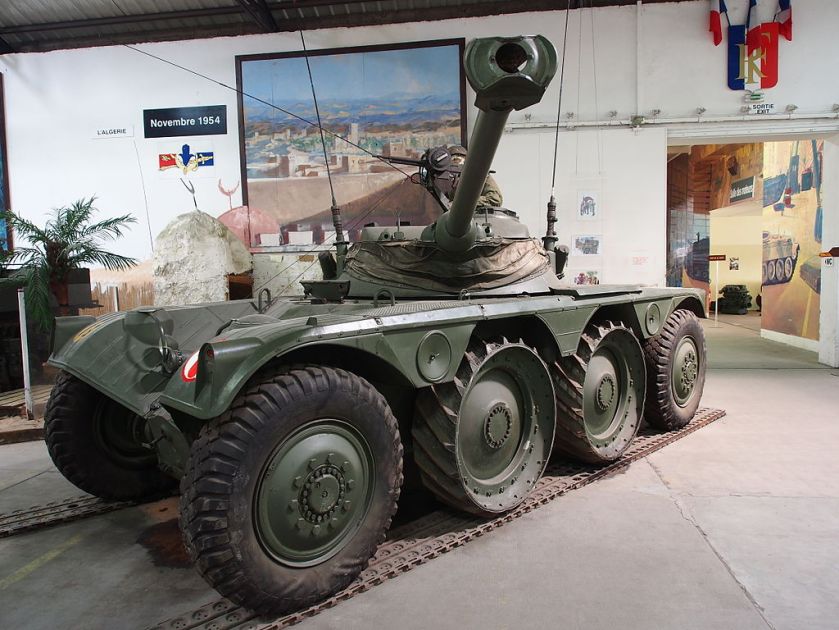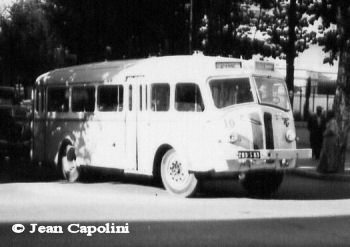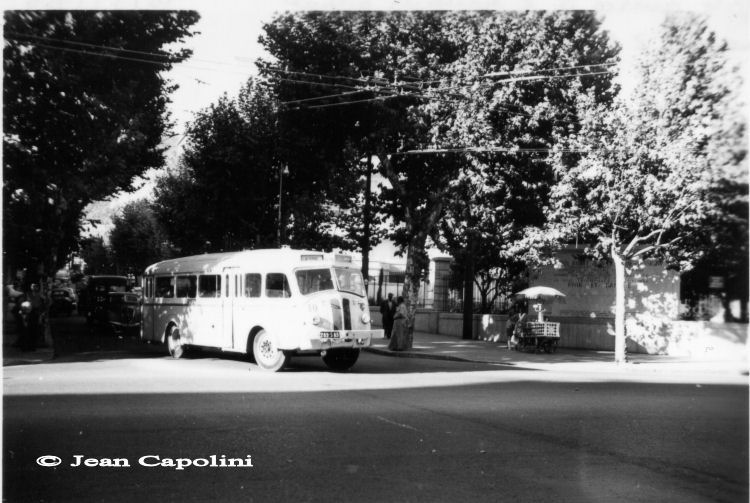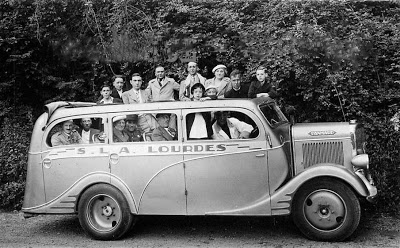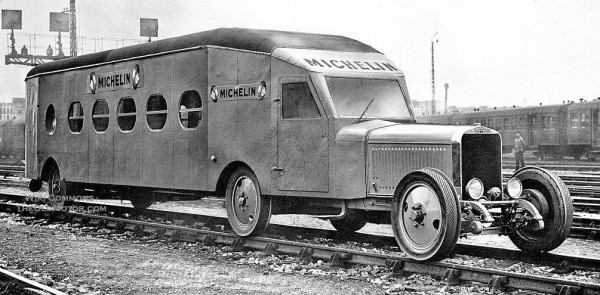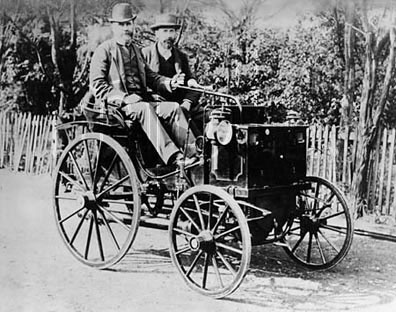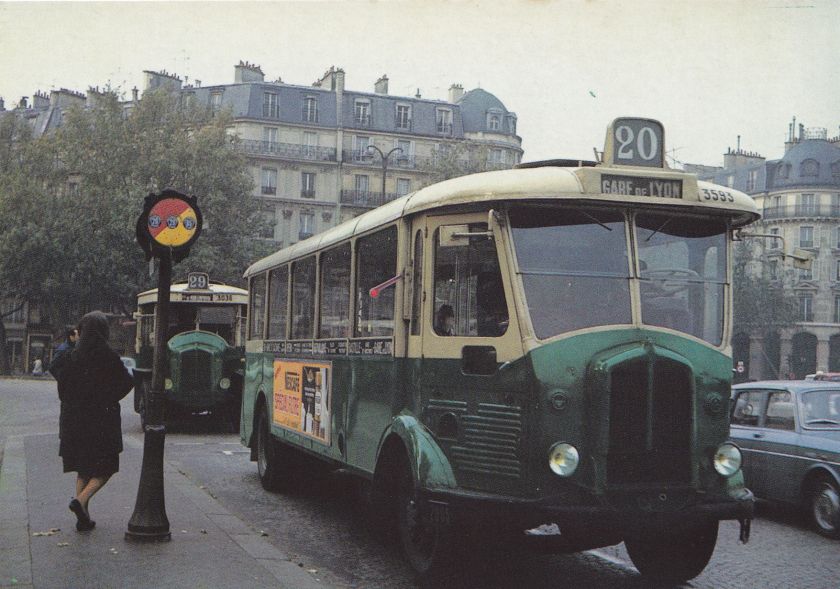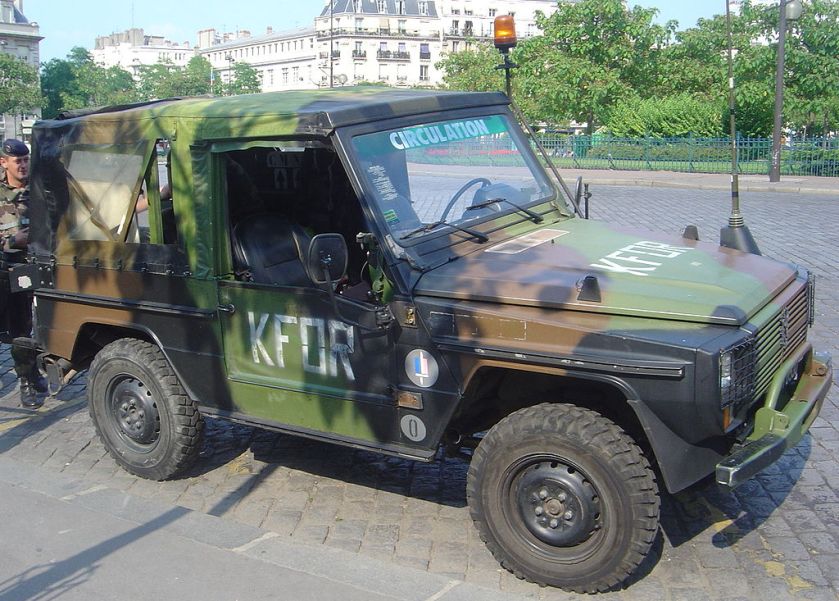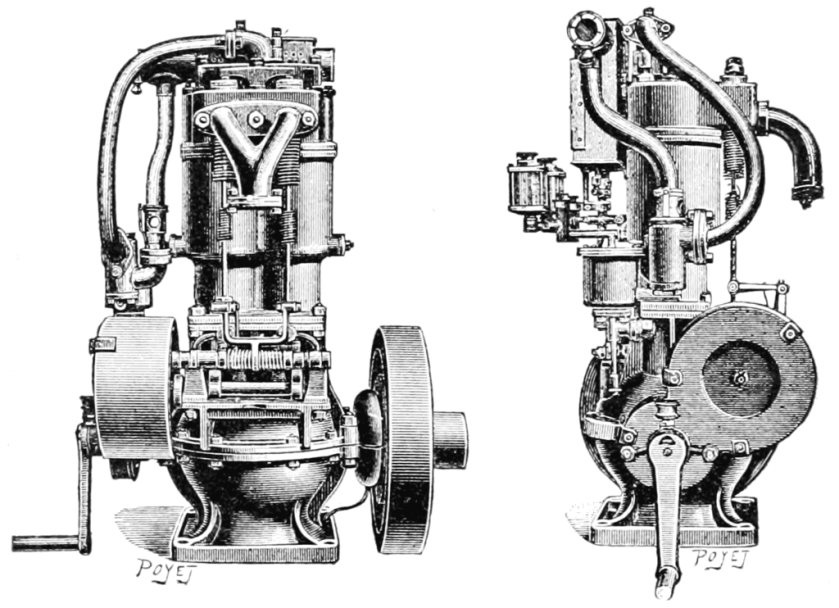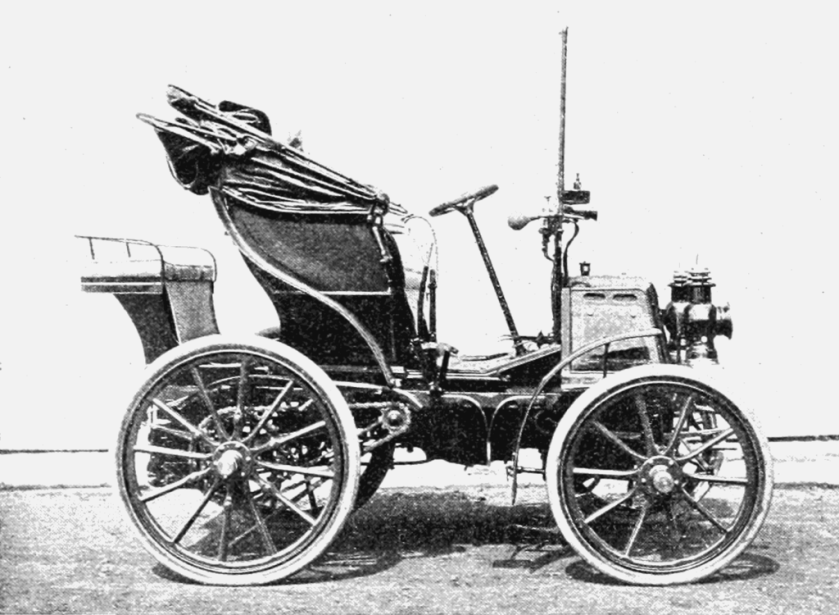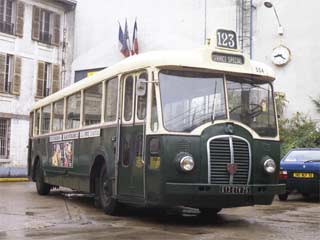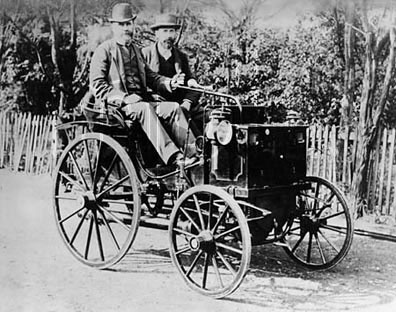
Panhard et Levassor (1890-1895). This model was the first automobile in Portugal
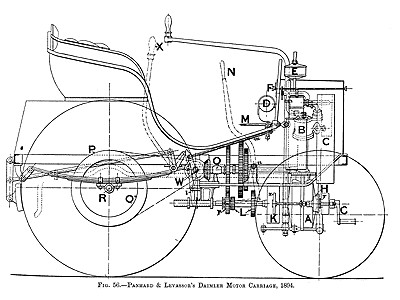
Panhard et Levassor’s
Daimler Motor Carriage, 1894
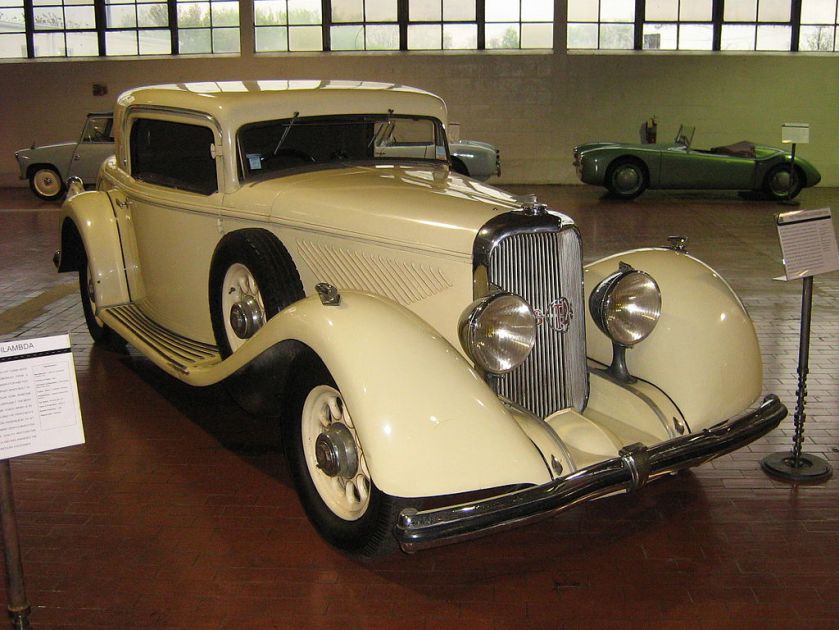
1933 Panhard et Levassor X74
Panhard is a French manufacturer of light tactical and military vehicles. Its current incarnation was formed by the acquisition of Panhard by Auverland in 2005. Panhard had been under Citroën ownership, then PSA (after the 1974 Peugeot Citroën merger), for 40 years. The combined company now uses the Panhard name; this was decided based on studies indicating that the Panhard name had better brand recognition worldwide than the Auverland name. Panhard once built civilian cars but ceased production of those in 1968. Many of its military products however end up on the civilian market via third sources and as military/government surplus vehicles. Panhard also built railbuses between the wars.
History
Panhard was originally called Panhard et Levassor, and was established as a car manufacturing concern by René Panhard and Émile Levassor in 1887.
Early Years
Panhard et Levassor sold their first automobile in 1890. based on a Daimler engine license. Levassor obtained his licence from Paris lawyer Edouard Sarazin, a friend and representative of Gottlieb Daimler’s interests in France. Following Sarazin’s 1887 death, Daimler commissioned Sarazin’s widow Louise to carry on her late husband’s agency. The Panhard et Levassor license was finalised by Louise, who married Levassor in 1890. Daimler and Levassor became fast friends, and shared improvements with one another.
These first vehicles set many modern standards, but each was a one-off design. They used a clutch pedal to operate a chain-driven gearbox. The vehicle also featured a front-mounted radiator. An 1895 Panhard et Levassor is credited with the first modern transmission. For the 1894 Paris–Rouen Rally, Alfred Vacheron equipped his 4 horsepower (3.0 kW; 4.1 PS) with a steering wheel, believed to be one of the earliest employments of the principle.
In 1891, the company built its first all-Levassor design, a “state of the art” model: the Systeme Panhard consisted of four wheels, a front-mounted engine with rear wheel drive, and a crude sliding-gear transmission, sold at 3500 francs. (It would remain the standard until Cadillac introducedsynchromesh in 1928.) This was to become the standard layout for automobiles for most of the next century. The same year, Panhard et Levassor shared their Daimler engine license with bicycle maker Armand Peugeot, who formed his own car company.
In 1895, 1,205 cc (74 cu in) Panhard et Levassors finished first and second in the Paris–Bordeaux–Paris race, one piloted solo by Levassor, for 48¾hr. Arthur Krebs succeeded Levassor as General Manager in 1897, and held the job until 1916. He turned the Panhard et Levassor Company into one of the largest and most profitable manufacturer of automobiles before World War I.
Panhards won numerous races from 1895 to 1903. Panhard et Levassor developed the Panhard rod, which became used in many other types of automobiles as well.
From 1910 Panhard worked to develop engines without conventional valves, using under license the sleeve valve technology that had been patented by the American Charles Yale Knight. Between 1910 and 1924 the Panhard & Levassor catalogue listed plenty of models with conventional valve engines, but these were offered alongside cars powered by sleeve valve power units. Following various detailed improvements to the sleeve valve technology by Panhard’s own engineering department, from 1924 till 1940 all Panhard cars used sleeve valve engines.
The First World War
Under the presidency of Raymond Poincaré, which ran from 1913 till 1920, Panhard & Levassor’s 18CV and 20CV models were the official presidential cars.
During the war Panhard, like other leading automobile producers, concentrated on war production, including large numbers of military trucks, V12-cylinder aero-engines, gun components, and large 75 and 105 diameter shells.
The military were also keen on the sleeve valve engined Panhard 20HP. General Joffre himself (not, till December 1916, promoted Marshal of France) used two 35HP Panhard Type X35s with massive 4-cylinder 7,360cc engines for his personal transport, and these were frequently to be seen by Parisians carrying military leaders between the front-line and the Élysée Palace.
Between two world wars
Following the outbreak of peace in 1918, Panhard resumed passenger car production in March 1919 with the 10HP Panhard Type X19 which used a 4-cylinder 2,140cc engine. This was followed three months later by three more 4-cylinder models which will have been familiar to any customers whose memories pre-dated the war, but they now incorporated ungraded electrics and a number of other modifications. For the 15th Paris Motor Show, in October 1919, Panhard were displaying four models, all with four cylinder engines, as follows:
-
- Panhard Type X19 2,150 cc / 10 HP
- Panhard Type X31 2,275 cc / 12 HP
-
- (This replaced the 12 HP Panhard Type 25 for 1920.)
- Panhard Type X28 3,175 cc / 16 HP
- Panhard Type X29 4,850 cc / 20 HP
By 1925, all Panhard’s cars were powered by Knight sleeve valve engines that used steel sleeves. The steel sleeves were thinner and lighter than the cast iron ones that had been fitted in Panhard sleeve valve engines since 1910, and this already gave rise to an improved friction coefficient permitting engines to run at higher speeds. To reduce further the risk of engines jamming, the outer sleeves, which are less thermally stressed than the inner sleeves, were coated on their inner sides with an anti-friction material, employing a patented technique with which Panhard engineers had been working since 1923. This was one of several improvements applied by Panhard engineers to the basic Knight sleeve-valve engine concept.
In 1925 a 4.8 litre (292ci) model set the world record for the fastest hour run, an average of 185.51 km/h (115.26 mph).
A surprise appeared on the Panhard stand at the 20th Paris Motor Show in October 1926, in the shape of the manufacturer’s first six cylinder model since before the war. The new Panhard 16CV “Six” came with a 3445cc engine and sat on a 3540 mm wheelbase. At the show it was priced, in bare chassis form, at 58,000 francs. Of the nine models displayed for the 1927 model year, seven featured four cylinder engines, ranging in capacity from 1480cc (10CV) to 4845cc (20CV), and in price from 31,000 francs to 75,000 francs (all in bare chassis form). Also on show was an example of the 8-cylinder 6350cc (35CV) “Huit” model which Panhard had offered since 1921 and which at the 1926 show was priced by the manufacturer in bare chassis form at 99,000 francs.
Panhard et Levassor’s last pre-war car was the unusually styled monocoque Dynamic series, first introduced in 1936.
Panhard et Levassor also produced railbuses, including some for the metre gauge Chemin de Fer du Finistère.
Post-war era
After World War II the company was renamed Panhard (without “Levassor”), and produced light cars such as the Dyna X, Dyna Z, PL 17, 24 CT and 24 BT. The company had long noted the weight advantages of aluminum, and this as well as postwar government steel rationing (designed to limit new car models to ensure an orderly return to production at the major firms), encouraged the firm to proceed with the expensive alternative of making the bodies and several other components out of aluminum; thus the Dyna X and early Dyna Z series 1 had aluminum bodies. Unfortunately, cost calculations by Jean Panhard himself, inheriting son and managing director of the firm, failed to account fully for all of the extra cost of aluminum vs steel, as his calculation were made for the sheet metal panel area actually utilized per body shell, and erroneously did not account for the cut offs and scrap of each of the stampings making up the shell. Once in production, a re-examination cost analysis showed a cost of 55,700fr for aluminum shells and only 15,600fr for steel. The use of aluminum had pushed the firm perilously close to bankruptcy, and a rush engineering job saw the firm return to steel. Thus, the later Dyna Z (from mid September 1955) and the successor PL 17 bodies were steel, and the major stampings retained the heavier gauge intended for durability with aluminum, so as to avoid complete replacement of the stamping dies.
The air-cooled flat-twin engine of the Dyna was also used by Georges Irat for his “Voiture du Bled” (VdB) off-road vehicle, built in Morocco in small numbers in the early 1950s.
The styling of the Dyna Z was distinctively smooth and rounded, with an emphasis on aerodynamics and an overall minimalist design. The 24 CT was a later (fr summer 1963-on) stylish 2+2 seater; the 24 BT being a version of the same with a longer wheelbase and space for four.
For a period after the war, the Panhard-based Monopole racing cars received unofficial support from Panhard (as did DB and other clients such as Robert Chancel), using it to good effect in winning the “Index of Performance” class at Le Mans in 1950, 1951, and 1952. In 1953, Panhard moved on to a more direct involvement with Chancel, which however came to an end after the deadly 1955 Le Mans. In the latter half of the fifties and the early sixties, the Deutsch Bonnet racers (“DB Panhard”) picked up this mantle and went on to dominate the “Index of Performance” as well as other small-engine racing classes.
The last Panhard passenger car was built in 1967. After assembling 2CV panel trucks for Citroen in order to utilize capacity in face of falling sales, and raising operating cash by selling ownership progressively to Citroën (full control as of 1965), in fall of 1967 the civilian branch was absorbed by Citroën, and the marque was retired. Since 1968 Panhard has only made armored vehicles.
In 2004, Panhard lost a competition to another manufacturer of military vehicles, Auverland, for the choice of the future PVP of the French Army. This allowed Auverland to purchase Panhard in 2005, then a subsidiary of PSA Peugeot Citroën. However, the fame of Panhard being greater, it was decided to retain the name; the PVP designed by Auverland would bear a Panhard badge.
Car models
Panhard models
Models with Panhard technology
Current military models












